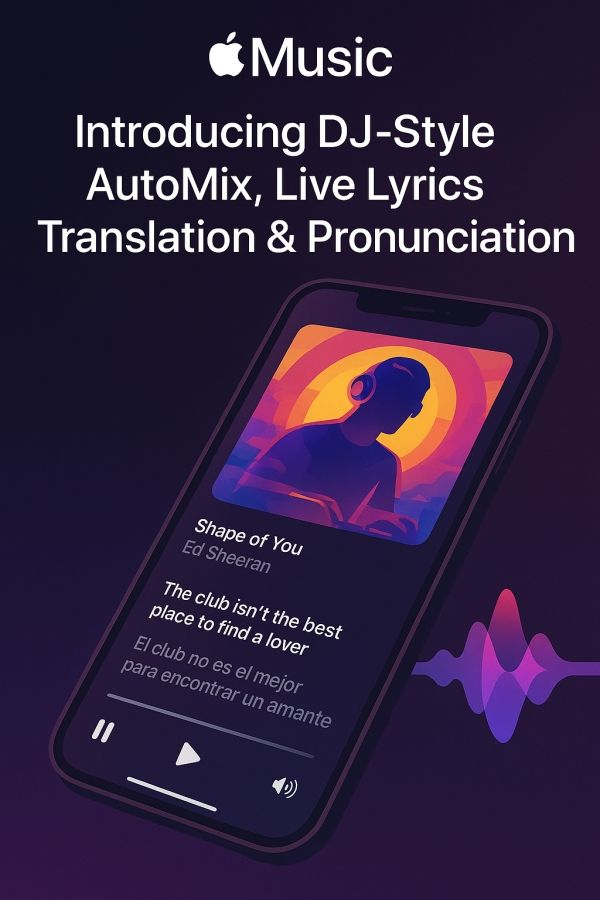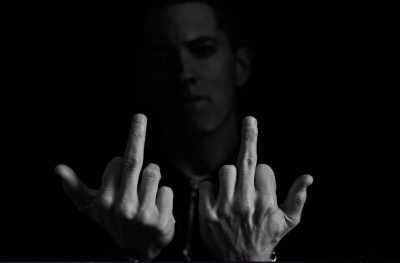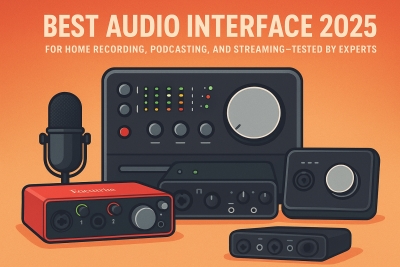
General Knowledge (101)
Fortnite Just Went FULL Daft Punk — Step Inside the World’s First Playable Music Experience!
Written by Sounds Space“A first of its kind”: An “immersive” Daft Punk experience is coming to Fortnite
Fortnite has long treated music like a playable playground. From Travis Scott’s planet-sized concert to The Weeknd’s neon spectacle, Epic Games has turned its island into a stage where millions can gather, dance, and experience music in ways that extend beyond a standard livestream. The next chapter in that experiment? An officially licensed, fully interactive Daft Punk Experience—an ambitious, multi-room tribute to the French electronic duo that promises to let players remix, dance, and even direct LEGO-style music videos inside Fortnite’s world.
What’s arriving and when
Epic’s Daft Punk Experience is scheduled to launch with a live event and then remain as an on-demand playground inside Fortnite. The grand opening is set for September 27 (with a pre-event lobby noted to open beforehand), while a Daft Punk-themed bundle—packed with signature helmets, outfits, accessories, and at least one playable Jam Track—becomes available in the Fortnite Item Shop shortly before the experience opens. This isn’t just another skin drop; Epic is billing the mode as one of its biggest musical experiences to date.
An interactive, room-by-room celebration
What makes this collaboration stand out is how hands-on it’s designed to be. Rather than a passive concert replayed to avatars, the Daft Punk Experience is structured as a modular playground of rooms and activities inspired by the duo’s catalogue and visuals. Players will be able to hop between themed zones—places built for remixing tracks, testing out laser-driven robot battles, assembling music-video scenes, and partying in a Daft Club that features archival performance footage and visual throwbacks to Daft Punk’s famed Alive era. The variety of interactions aims to turn fans into co-creators, allowing them to manipulate stems, craft mashups, and save or share their creations.
A deep dive into the catalogue
Epic says the Experience will include 31 songs spanning Daft Punk’s career. That breadth suggests the playground will move beyond the obvious hits, giving players access to deeper cuts, live edits, and moments that showcase why the duo became icons of modern electronic music. Offering stems and remix-friendly tools inside a game environment is a significant step: it blends music production basics with the accessibility of a game UI, lowering the barrier for creative experimentation for millions of players who might never otherwise try remixing.
How does this fit Fortnite’s music playbook?
Fortnite’s approach to music has always been experimental. Epic has iterated on concerts (real-time, ephemeral shows), interactive modes (where music reacts to player input), and branded islands that double as creative spaces. The Daft Punk Experience looks like a maturation of those ideas: it’s not merely a promotional moment but a persistent space where the rules of the game are reshaped around music-making and collective fandom. By anchoring the experience to a legendary act with an audiovisual identity as strong as Daft Punk’s, Fortnite is effectively offering the pair’s aesthetic as a new game mechanic—lights, loops, and robot choreography become tools players can wield.
What the bundle brings (and why it matters)
Alongside the experience, a Daft Punk bundle will be sold in Fortnite’s shop. Early reporting lists the duo’s signature TB3 and GM08 helmets, outfits styled after both the real-world and LEGO-like versions of the band, musical accessories, and the “Get Lucky” Jam Track that players can use inside their creations. Bundles like this aren’t just cosmetic revenue drivers; they enable identity play—players can dress as the robots, jam with friends, and signal their fandom inside the shared world. For a franchise that earns both attention and cash through in-game goods, tie-ins like this are now central to how music and gaming interact economically.
Creative potential—and limitations
The idea of letting players sit in the producer’s chair is intoxicating. Imagine a teenager in a small town learning about sampling by dragging a Daft Punk drum loop into a virtual remix booth, or a content creator producing a short LEGO-style music video inside Fortnite and sending it viral. That democratization of music tools, even simplified ones, is an accessible gateway to creative practice.
But there are practical limits. Fortnite’s interface, while flexible, is still a game; it can’t fully replicate professional DAW workflows or high-fidelity mastering. The Jam Track tools and remix mechanics will almost certainly be simplified for playability, which both helps accessibility and constrains complexity. Nevertheless, the experience’s educational and inspirational value—getting millions to experiment with song structure, rhythm, and audiovisual synchronization—could be enormous.
Why is it being called “first of its kind”?
Many writers and industry observers are calling the Daft Punk Experience a “first of its kind” because it blends licensed tracks, archival live footage, user-driven remixing tools, and a persistent in-game playground into a single, cohesive product. Previous Fortnite events have leaned heavily into spectacle and linear shows; this project pushes toward a creative sandbox where music becomes a manipulable environment rather than a backdrop—an evolution that could set a new template for future music/game partnerships.
Looking beyond Fortnite: a new model for music experiences
If the Daft Punk Experience succeeds, expect more artists and estates to pursue similar partnerships. The model is compelling: games provide scale, interactivity, and an engaged audience; artists provide IP, music, and cultural cachet. Together they can create experiences that are promotional, commercial, and—perhaps most importantly—creative. For artists, the payoff is exposure and new revenue streams; for players, it’s access and agency. For the music industry at large, it’s another nudge toward thinking of songs not only as recordings but as playable, remixable artifacts.
Final note: bring your headphones and an open mind
Whether you’re a Daft Punk diehard or a curious gamer, this is one of those crossover moments worth trying. Even if you never touch the remix tools, marching through 31 tracks with visual callbacks to the duo’s storied career—while dressed as a neon robot—will be an event. More importantly, the experiment is a reminder that creative culture is increasingly hybrid: music, film, and games will keep borrowing each other’s vocabulary, and the players in between will be the ones writing the next set of rules.
Sources & further reading: Epic Games’ official announcement, Pitchfork, DJ Mag, TechRadar, and coverage from Flood and other outlets provided the details summarized here
Apple Music Levels Up: DJ-Style AutoMix, Live Lyrics Translation & More in iOS 26
Written by Sounds SpaceApple Music Levels Up: DJ-Style AutoMix, Live Lyrics Translation & More in iOS 26
Music streaming is no longer just about selecting songs and pressing play. With Apple’s iOS 26 rollout, Apple Music is pushing forward with new features that aim to deepen listening, break down language barriers, and blur the line between a curated DJ set and your personal playlist. Among the most significant upgrades: AutoMix, Lyrics Translation and Pronunciation, plus a host of companion features that make the experience more seamless and global. Here’s what’s new, why it matters, and what to watch out for.
What’s New: AutoMix, Lyrics Translation & Pronunciation
AutoMix: DJ-Style Transitions
One of the headline additions is AutoMix. Designed to make transitions between songs smoother, AutoMix analyses audio features like tempo, beat, and key (using Apple’s AI/machine learning tools) and dynamically mixes one track into the next. The idea is to avoid awkward silences or sharp jumps — the way a skilled DJ would make sure the dancefloor stays alive.
Unlike the simple “crossfade” that many streaming services offer (where one track fades into another), AutoMix employs time-stretching and beat matching, letting tracks overlap in rhythmically compatible ways and maintain a continuous flow.
Lyrics Translation and Pronunciation
Another major set of features aims at making music more linguistically accessible:
-
Lyrics Translation: Users can now see translations of lyrics into their native or preferred languages. This helps in understanding the meaning behind songs in foreign languages — whether you're exploring world music or simply listening to a track you like but don’t fully understand.
-
Lyrics Pronunciation: Alongside translation, Apple is also introducing pronunciation aids. This assists in singing along properly (or learning) when lyrics are in languages you don’t speak fluently. Important for phonetics, cultural expression, etc.
These features are made possible by combining machine learning with human-expert oversight, ensuring that nuance, emotion, and cultural context aren’t totally lost in translation.
Why This Matters
These aren’t just small “nice to have” updates. They shift how we engage with music in several meaningful ways:
-
Enhanced listening experience
AutoMix turns passive listening into something more immersive. Whether you’re working, walking, driving, or hosting, the flow matters — abrupt transitions or silence can break the mood. AutoMix keeps you “in the moment.” -
Globalization & inclusivity
With streaming, geography is no longer a barrier — but language still is. Being able to read translations and see pronunciation helps users access and appreciate music from cultures and languages beyond their own. It makes music more universal. -
Learning & appreciation
These features also serve as tools for language learners, world music fans, and even karaoke enthusiasts. Pronunciation tools and real-time translations can help with understanding lyrics, cultural references, or metaphors you might otherwise miss. -
Competition & innovation in streaming
Features like AutoMix reflect how streaming services are pushing to differentiate themselves. It’s not enough anymore to just have large catalogs; it’s about how you deliver, how you enhance, how you let users connect. Apple spurs competition, which typically results in better features for everyone.
Potential Limitations & Things to Watch
All new features come with trade-offs, and user feedback already suggests some issues and caveats:
-
Cuts in songs / truncated transitions: Some early testers say AutoMix sometimes cuts off portions of tracks (especially the end of a song or beginning of the next) too early, sacrificing full verses or intros in favor of a smooth transition.
-
Genre/playlist restrictions: AutoMix may work better in certain genres or playlist types. Songs with wild tempo changes, dramatic intros or outros, or non-standard musical transitions might be harder to mix well. The algorithm has limitations.
-
Translation limits: While translations are powerful, initially, they may only cover certain language pairs. And nuance (slang, cultural idioms) can be hard to preserve even with experts refining them. Users may find some translations less polished.
-
Device / regional availability: As with many new Apple Intelligence features, availability depends on device capability and region. Some older devices may not support the new AI-driven features, or certain languages may not be available immediately.
Broader Context & What It Suggests for the Future
These upgrades give us hints about where music streaming might be headed.
-
More AI in creative delivery: AutoMix shows that AI isn’t just for recommendations or playlists — it’s involved in how the music sounds to the listener. We can expect more tools that alter or augment playback (remixes, dynamic EQ, spatial audio, etc.).
-
Cultural bridging tools become core: Lyrics translation & pronunciation suggest that global music markets will increasingly prioritize understandability and cultural resonance — not just discovery but comprehension. This ties into the rise of global hits (K-pop, Latin, Afrobeats, etc.).
-
User control vs automation balance: Users like automation (so things are smoother, easier), but also want control (keeping full songs, not skipping intros, preserving original album experiences). Apple and others will need to balance those.
-
Hardware & software integration: Features like “Sing” allowing your iPhone to act as a microphone when paired with Apple TV, visual effects, etc., show Apple building into their ecosystem. The software features are tightly coupled with devices.
Final Thoughts
Apple Music’s introduction of AutoMix, real-time lyrics translation, and pronunciation features marks a meaningful step forward in how we listen to and understand music. It shows that streaming isn’t just about what’s next in the queue, but how we transition between tracks, how much of the content we can absorb, and how global our musical identities can be.
For many users, the result could be more immersion, more connection, and more joy — whether you’re exploring foreign artists, belting karaoke in your living room, or simply letting music carry you through your day without interruption. That said, perfection isn’t here yet: occasional truncations, genre limitations, and device restrictions may temper the experience for some. But on balance, these are exciting innovations.
Learn more at APPLE
United Studio Technologies UT Twin48 Review: A Modern Take on Vintage 47 & 48 Tube Mics
Written by Sounds SpaceBringing Two Vintage Legends into One: The United Studio Technologies UT Twin48
In the world of high-end studio microphones, few items carry as much mystique (and cost) as the “47” and “48” style tube condensers — classic mics from the late 1940s and 1950s that have defined the sound of countless recordings. But owning one of those originals — in good condition — is both difficult and expensive. United Studio Technologies (UT) has taken a bold step: the UT Twin48 is a new microphone that aims not just to replicate one classic, but to bring both of these revered designs into a single, flexible tool.
This isn’t just a clone; it’s a hybrid (or “twin”) in more ways than one. Here’s what the Twin48 offers, what works well, what to look out for, and whether it might make sense for your studio.
What the Twin48 Does & What’s Inside
Two Modes: 47 & 48
A key feature of the Twin48 is that it provides two historically distinct mic modes in a single body.
-
47 Mode: Offers “47 Cardioid” and "47 Omni". The cardioid mode here is called “True Cardioid”—where the rear diaphragm is decoupled to give a more open, sensitive sound, with more ambience and top-end detail.
-
48 Mode: Offers “48 Cardioid” and "48 Figure-8". The cardioid in this mode is achieved differently ("Active Cardioid," where the rear diaphragm is polarized along with the backplate) yielding a more intimate, warmer sound, lower in sensitivity.
So, depending on what you're recording (vocals, acoustic guitar, strings, horns, etc.) you get options: the more airy, open character of the 47 side, or the richer, thicker texture of the 48.
Components & Build Quality
United didn’t cut corners. Some of the standout design/internals:
-
Capsule: UT K48 custom capsule — dual diaphragm, single backplate, 34 mm brass, 6-micron Mylar, gold-sputtered. Designed to be very close to the originals in feel and sound. United Studio Technologies+1
-
Tube: Uses a “new old stock” EF86 pentode tube — the same type (or descendant) as used in the vintage originals. That gives it a harmonic profile more in line with what made vintage 47/48s so desirable. United Studio Technologies+1
-
Transformer: The UT-BV8 transformer is a custom one, US-made, wound to original specifications (Braunbuch spec), high-nickel alloy laminations, copper Faraday shielding to reduce interference. United Studio Technologies+1
-
Power Supply: External, discrete rails, high-quality regulation, good filtering of RF/EMI, etc. For a tube mic, the PSU matters a lot. UT seems to have put effort into ensuring noise is kept low and that the mic is stable. United Studio Technologies+1
Physical & Practical Specs
-
Frequency range: 20 Hz – 20 kHz. United Studio Technologies+1
-
Max SPL: approx 137 dB @ 0.5% THD. United Studio Technologies+1
-
Self noise: about 11 dB (A-weighted). United Studio Technologies+1
-
Output transformer, external PSU, cable included, shockmount; it comes with a briefcase style case. United Studio Technologies+1
What the Review Says: Sound, Performance, & Character
The MusicTech review describes the UT Twin48 as sounding fabulous, especially when recording acoustic guitar. The mic captures “superb results” for that application. MusicTech
Some engineers note how you achieve strong results without needing to grab other mics or spend time finding just the right vintage unit. That flexibility (switching between the 47- and 48-modes) allows you to adapt depending on performance, room, vocalist, etc., without swapping gear. United Studio Technologies+2MusicTech+2
Also, people have pointed out that the Twin48 tends to smooth out harshness or sibilance compared to cheaper vintage-style copies, due to its capsule design and electronics. It’s not overly bright; there’s a richness and creaminess that many find pleasing. United Studio Technologies+2msonic Baltic+2
However, some notes of caution: for very forward, modern vocal production (think “in your face” pop/hip-hop vocals), the richer character may need some EQ or supplementary mics to get maximum clarity or edge. Also, tube mics in general are larger, heavier, require external PSU, and have some maintenance/operational trade-offs (warm-up time, tube life etc.). But this is true of any mic in this class.
What is it Great For?
Here are scenarios where the Twin48 seems particularly well suited:
-
Acoustic guitar: The airy top end of the 47 mode, or the richer warmth of 48 mode, both allow you to capture beautiful and musical tone. The review highlights that as one of its best use cases. MusicTech
-
Strings and orchestral instruments: Because of its smooth high-end and low distortion at high SPL, plus pattern versatility, it's good for detail without harshness.
-
Vocals (especially when you want vintage warmth): For singer/songwriter, jazz vocals, or anything where a more “classic” or “luxury” mic sound is desired.
-
Room enables airy recording: In a good room, the sensitivity and detail allow you to get ambient cues (especially with the omni or figure-8 modes) that enhance the sense of space.
Where might it Be Less Ideal?
It’s not all perfect, and some situations may see less benefit or require compromise:
-
Very modern vocals needing precision: If you want something razor-sharp, ultra-bright, super tight (e.g. for certain pop, rap, voice-overs), you might find the Twin48 a little too lush, and may need EQ or pairing with another mic.
-
Budget and cost factor: The unit is not cheap (price is significant, especially when you include the PSU, case, etc.). For someone building a starter studio, this is a premium tool.
-
Physical logistics: Big mic, external PSU, warm-up times and tube maintenance. Also, tube mics generally require more careful cabling, grounding, and noise control.
-
Sensitivity & gain: In very loud environments (or needing very loud sources), might require careful gain staging to avoid overload; similarly in very quiet sources, you may hear noise more if preamps are less than ideal.
Verdict: Who Should Consider the Twin48
If you are serious about having a versatile, high-end tube mic that can deliver both the airy clarity of a 47 and the richer, more intimate voice of a 48, the Twin48 is a rare kind of tool. For studios that already have good preamps, good rooms, and want a “one mic, many voices” machine, it seems like a strong investment.
If you’re more into hard-edged modern styles, or on a tight budget, or need very rugged / portable setups, then you might get more utility out of mics tailored to that niche (possibly spend less or use more than one cheaper mic to cover desired tonal palette).
Final Thoughts
The UT Twin48 does something increasingly rare: it bridges two classic microphone worlds with fidelity and engineering rigour. It doesn’t just mimic; it gives you intentional choices—choice of character, of pattern, of clarity vs warmth—all baked into one mic. The build, components, and design appear top-tier, and user reviews, especially from MusicTech, praise the results.
If I were building or upgrading a studio and could stretch the budget, I’d likely pick this up as a centerpiece mic. It could reduce the need to own multiple classic clones if it indeed covers both those spaces well enough.
EMINEM SUES MARK ZUCKERBERG'S META FOR $109 MILLION IN A MAJOR LAWSUIT FOR USING 243 OF HIS SONGS ON REELS AND REMIXES WITHOUT PERMISSION.
Written by Sounds SpaceThe Case at a Glance
-
Who’s suing: Eight Mile Style, the music publishing company that owns the rights to many of Eminem’s early songs (from about 1995-2005). Eminem (Marshall Mathers) is not named personally.
-
Defendant: Meta Platforms, Inc. (parent company of Facebook, Instagram, WhatsApp).
-
What’s alleged: That Meta allowed, encouraged, reproduced, stored, distributed, and made available 243 songs from the Eight Mile Style catalog without a proper license. Features such as Original Audio and Reels Remix are cited as channels via which users could use this music without permission or attribution.
-
Where: On Meta’s platforms — Facebook, Instagram, WhatsApp.
-
Damages being claimed: Over US$109 million (~US$109,350,000), calculated as statutory damages of $150,000 per song for each platform where the songs were used unlawfully.
-
Legal claims/causes: Copyright infringement (unauthorized reproduction, distribution, storage), contributory infringement, vicarious infringement, inducement of infringement, and lost profits / diminished copyright value.
Background: Eight Mile Style & Licensing History
To understand what’s going on, it helps to know a bit about how music publishing, licensing, and rights holders work.
-
Eight Mile Style is the publishing company closely associated with Eminem’s early catalog. They own or control many of the copyrights for Eminem’s songs from roughly 1995-2005.
-
In 2020, Meta entered into an agreement with a royalty collection/licensing firm called Audiam, Inc. according to the lawsuit, that Audiam agreement did not include a license for the Eight Mile Style catalog.
-
Prior to this lawsuit, Eight Mile Style had complained to Meta about certain songs, and in some cases, Meta removed “several” of those compositions from its music libraries. But Eight Mile Style alleges that despite removals, unauthorized copies remained stored, reproduced, and distributed.
What Eight Mile Style Alleges
Here are the main contentions that E.M’s publisher is making:
-
Unauthorized Use of Platform Features
Meta allegedly allowed features like Original Audio and Reels Remix to be used in ways that let users choose and attach audio from the 243 songs into their video content without a proper license. These features are seen not just as passive hosts but as tools that enable unlicensed use. -
Reproduction, Storage & Distribution
They claim Meta stored copies of these works on its servers (online music libraries), reproduced them (copies for distribution), and made them available to users. This isn’t just streaming; the allegation is of full reproduction and storage without permission. -
Economic Harm
-
Loss of profits/royalties that should have come from licensing those songs properly.
-
Diminished value of the copyrights (if the songs are freely available or used without a license, their licensing value can decrease).
-
Unjust enrichment by Meta (because Meta benefits from user engagement, content creation, etc., which uses those songs).
-
-
Statutory Damages
They seek the maximum statutory damages allowed per song, which is $150,000 per work per platform (Facebook, Instagram, WhatsApp). With 243 works × 3 platforms × the statutory max, that leads to the ~$109.35 million claim.
Meta’s Position (So Far)
From what’s reported:
-
Meta says it has licenses with thousands of partners globally and runs a large licensing program for music.
-
Meta also claims that it was negotiating in good faith with Eight Mile Style before the lawsuit.
-
After being alerted, Meta removed some of the compositions from its music libraries.
Legal Issues and Potential Outcomes
Here are some of the legal dynamics and what to watch out for:
-
Statutory vs. Actual Damages
The lawsuit is seeking statutory damages (i.e. the maximum allowed per song, per platform). If proven, those are very high. But actual damages could differ — proving usage, harm, and profits will be critical. If Meta is found liable, the statutory damages are powerful leverage. -
What “license” means, and what was promised
The crux is whether Meta had appropriate license(s) covering Eight Mile Style’s works. If Audiam did not possess the right to license those works (as alleged), then Meta’s reliance on those licenses might be invalid or incomplete. -
Injunctions and removal
Beyond money, Eight Mile Style is seeking a court order to prevent Meta from continuing unauthorized uses. Removal of works, stopping certain features, or disabling certain library availability might be part of relief. -
Burden of proof
Eight Mile Style must show that Meta stored, reproduced, and distributed the works without authorization, that users accessed and used them via Meta features, and quantify damages. Meta will likely argue that some or many uses were licensed, or that it acted in good faith, and/or that some alleged copies were removed, etc. -
Precedent / Implications for Other Artists
This case could be widely followed. Platforms increasingly allow user-generated content (UGC) with music, and artists/publishers have long complained about insufficient compensation or licensing transparency. A verdict here could affect how tech giants license music catalogs, how features are designed (e.g., whether users can pick arbitrary songs not licensed for certain use), and the exposure of platforms to copyright claims.

Why This Matters: Broader Implications
-
Artist Rights in the Digital Era
As more content is user-generated and platforms embed music libraries for use in videos, Reels, Remixes, etc., there is tension between convenience (for users/content creators) and fair compensation/licensing for rights holders. Artists and publishers want their music to be properly licensed and compensated. -
Platform Liability
How liable is a platform when users upload or embed content that uses copyrighted material? There are doctrines like contributory infringement, vicarious infringement, inducement, etc., which come into play. Depending on how courts interpret “permission” versus “hosting” or “enabling,” platforms may need to be more rigorous. -
Licensing Practices
Agreements like the one between Meta and Audiam will come under scrutiny: what do they cover, what doesn’t, how comprehensively? If catalogs are excluded, platforms risk infringing works. Also, whether rights holders are properly consulted or notified, and whether they receive royalties or compensation when their works are used in new digital formats/features. -
Statutory Damages as a Deterrent
When each infringed song can carry up to $150,000 in damages, multiplied across a big catalog and multiple platforms, the sums become large. That can influence negotiation behavior: platforms may prefer to settle, license more conservatively, or proactively ensure they have rights. -
Public Perception / Brand Risks
For a big company like Meta, lawsuits of this kind pose not just financial risk but reputational risk. Accusations of exploiting artists can fuel public criticism. For artists, pursuing these cases can be seen as defending creative rights, which many fans will support.
What's Unclear / To Be Determined
While some facts are public, others will be fleshed out in court:
-
Exactly how many times and in what contexts the songs were used in unlicensed ways. E.g. how many videos, how many streams, etc. Eight Mile Style claims “millions of videos, billions of streams.” People.com+1
-
Which songs among the 243 are most central, and whether some have already been licensed separately, or whether Meta had partial licenses.
-
Whether some alleged uses are protected under fair use or other statutory exceptions (though with music licensing this is a high bar).
-
Whether Meta can show it took sufficient action once it became aware of the complaint (i.e. removal of works, implementing filters, etc.).
-
The final monetary judgment, if any, may be less than the $109M claimed, depending on what is proven.
Possible Outcomes
-
Settlement: Very possible. Given the large sums and the uncertainty and cost of litigation, often these cases get settled out of court. Meta may agree to pay some amount, license the catalog properly, or agree to change practices.
-
Trial Victory for Eight Mile Style: If they win fully, they might get damages near what was claimed, plus possibly an injunction that forces Meta to remove or stop using many of the songs or features.
-
Trial Victory for Meta / Dismissal: If Meta can show it had licenses, or that the statutory damages claim is too high, or that some claims are invalid, the court may reduce damages or dismiss parts of the case.
-
Changes in Industry Practice: Regardless of the outcome, this suit will likely cause platforms to be more careful about licensing, and rights holders will be more aggressive in monitoring and pursuing infringement.
What This Means for Creators, Platforms, and Users
-
For Other Artists & Publishers
This shows that it’s possible to challenge huge platforms over music rights. It might encourage others to audit whether their works are included in streaming/music-library features without proper licensing. -
For Platforms / Tech Companies
They may need to re-examine their licensing agreements to ensure they truly cover all the catalogs they use, especially for user-modifiable features like Reels, Remixes, etc. Also, possibly implement better detection, take-down, or opt-in/opt-out mechanisms. -
For Users / Content Creators
There’s risk: users might be relying on music features, assuming that everything in platform music libraries is licensed and legal to use. This lawsuit underlines that sometimes that assumption can be wrong, which could lead to content being removed, or in theory liability issues (though normally platforms absorb much of that).
A Closer Look at Statutory Damages & US Copyright Law
To understand the $150,000 per song number:
-
Under U.S. copyright law, for willful infringement, the law allows statutory damages of up to $150,000 per work (song) infringed. This is regardless of how much money the rights holder actually lost, if they opt for statutory damages and the court finds infringement willful.
-
Because Eight Mile Style alleges Meta allowed, stored, distributed, etc., without a license, and that Meta was aware (or should have been aware) and in negotiations etc., the willful infringement allegation is part of what supports seeking the maximum.
-
However, awarding the full statutory amount per work per platform is not guaranteed. Courts often consider various factors in determining damages: how widespread the infringement was, how much was known, how much harm resulted, whether the defendant took action once notified, etc.
Why Eminem Is Not Named & What That Means
-
The lawsuit is not filed by Eminem personally but by Eight Mile Style, which owns/controls the publishing rights to the catalog in question.
-
That distinction matters legally: the rights holder (publisher) is the one with the legal standing to sue, not necessarily the performing artist (unless the artist holds the rights). It also may affect public perception — fans sometimes assume it is the artist, but in the legal/financial world, the entity holding the copyright is the plaintiff.
What the Claim Could Trigger Going Forward
-
Platforms may start auditing their entire music library catalogs more aggressively. If they find unlicensed works, they may pull those, pay retroactive fees, or change how audio features work.
-
There could be pressure for more transparency in licensing—artists and publishers might demand clearer reporting of which songs are licensed where, and how royalties / fees are calculated.
-
Lawmakers might take notice: as user-generated content platforms evolve, there’s already been ongoing legislative attention to how music copyright is handled online. This case might feed into broader policy debates.
-
Licensing firms and rights management organizations might get more scrutiny—auditing their practices, ensuring that when firms offer licensing on behalf of rights holders, they actually have the authority to do so and rights holders are compensated.
Conclusion
The $109 million lawsuit by Eight Mile Style against Meta is a high-stakes example of the tension between user-generated content platforms and the rights of creators and rights holders. It raises fundamental questions:
-
What does it mean for a platform to “license” music properly, especially when its features allow users to incorporate music widely in user content?
-
How much responsibility do platforms have for verifying that the music in their libraries is fully cleared?
-
What remedies are available when copyright holders believe their works have been used without authorization?
Whatever the outcome, this case is likely to reverberate across the music and tech industries—and could shift how platforms deal with copyrighted material in the age of Reels, Remixes, short-clips, and viral audio.
Internet Archive reaches “confidential resolution” with major labels over the Great 78 Project — what it means
Written by Sounds SpaceInternet Archive reaches “confidential resolution” with major labels over the Great 78 Project — what it means
On September 15, 2025, the long-running and closely watched legal fight between the Internet Archive and several major record labels quietly came to an end. In a short filing to the U.S. District Court in San Francisco both sides told the court they had “settled this matter” and asked the judge to hold the case while they implement the deal — and the Internet Archive followed with a terse blog post saying the parties “have reached a confidential resolution of all claims” and that there would be no further public comment.
The dispute, formally docketed as UMG Recordings, Inc. v. Internet Archive, grew out of the Internet Archive’s Great 78 Project — an ambitious effort to digitize fragile shellac 78-rpm discs from the early 20th century and make those recordings publicly accessible for research and listening. Labels, including Universal Music Group and Sony Music (along with other plaintiffs named over time) argued that the Archive went far beyond preservation and effectively operated as an unauthorized digital distribution platform, seeking hundreds of millions of dollars in damages. The Archive defended the effort as preservation and fair use, a digital analogue to what libraries and museums have done for generations.
Below I unpack what happened, why it mattered to archivists, artists, and the music industry, and what the confidential settlement may — and may not — mean going forward.
A short history: Great 78, the lawsuit, and the build-up
The Great 78 Project (started publicly in 2017) invited donors to send in old 78-rpm discs — shellac records from roughly the 1890s through the 1950s — which the Archive digitized and posted online with metadata for researchers and the public. To preservationists, the project was straightforward cultural stewardship: 78s are physically fragile, playback equipment is rare, and many recordings risked being lost. The Archive built a searchable collection that quickly became a reference point for historians, collectors, and musicians.
In August 2023 a coalition of major labels filed suit, alleging the Archive had uploaded thousands of recordings without authorization and was essentially operating an illegal record store; early estimates of claimed damages varied, with headlines citing sums in the hundreds of millions of dollars. The litigation gained public attention not only because of the dollar amounts involved, but because it pitted an institution that many see as a public-benefit library against the modern commercial music industry. In 2024, a federal judge in California rejected part of the Archive’s attempt to dismiss the case, meaning the Archive would have to answer many of the labels’ claims in court — a major escalation that set the stage for protracted litigation.
What the parties argued
The labels’ central claim was straightforward: many of the recordings in question remain protected by copyright (through recordings and/or publishing rights), and the Archive’s posting and streaming of those tracks constituted unauthorized distribution and public performance. Label filings described the Archive’s site as offering content in a way that competed with commercial services — a particularly sensitive charge in an industry where licensing and controlled distribution are the primary ways rights holders monetize recordings.
The Internet Archive answered with familiar library and preservation defenses. It emphasized the public-interest character of its work, the historical and scholarly value of making rare recordings accessible, and asserted that a broad fair-use defense applied in many instances. The Archive also framed itself as a nonprofit library doing what libraries do: digitize, catalog and make rare materials available for research and posterity. For many legal observers, the dispute raised classic questions about how copyright exceptions for libraries and archives apply in a digital world — particularly when material is made available outside a single reading room and can be streamed worldwide.
The public reaction: artists and archivists take sides
The case drew a surprising wave of grassroots support for the Archive. Hundreds — by some counts over 600 — musicians and cultural figures signed open letters and statements urging the labels to drop the lawsuit, arguing that the Archive’s work preserved musical heritage rather than undercutting living artists. Organizations such as Fight for the Future amplified the campaign, and prominent musicians including Tegan and Sara, Kathleen Hanna and Amanda Palmer publicly backed the Archive’s preservation mission. Preservationists, music historians and some independent labels likewise warned that a successful suit could chill efforts to digitize and preserve rare audio artifacts across the cultural sector.
On the other side, many in the industry framed the suit as an effort to defend artists’ and rights-holders’ control over how their recordings are used and monetized. Labels argued that when copyrighted works are uploaded and streamed without licenses, creators and rights owners lose both revenue and bargaining power.
Why the confidential settlement matters (and why we still don’t know much)
Confidential settlements are common in civil litigation, particularly when large organizations and reputational risk are in play. But confidentiality also leaves a vacuum where clarity would help policymakers, archivists and rights holders navigate similar disputes in the future.
Because the court filing and the Archive’s blog announced only that a confidential resolution was reached, we do not yet know key things people were watching for:
• Did the Archive remove particular recordings or portions of the Great 78 collection as part of the deal? Several outlets reported that some recordings had been taken down during litigation; whether that removal will be permanent or conditional is unclear.
• Were royalties, licenses or monetary payments part of the settlement? If so, to whom and under what standards? A settlement could involve payments, licensing deals for specific titles, or procedural changes to how the Archive ingests and posts materials — but the public record is silent.
• Does the agreement create any precedent, industry standard or pathway for libraries to lawfully digitize fragile recordings for public access? Because the settlement terms will be confidential, it’s unlikely we’ll get a clear legal rule out of this case in the near term.
It’s worth noting that confidentiality benefits both sides in practical ways. Labels can assert their rights without establishing a publicly cited legal victory or admitting fault. The Archive can avoid an adverse judgment that might limit nonprofit archiving activities or require expensive compliance regimes. But for scholars, archivists, librarians, and smaller cultural institutions looking for guidance, the secrecy is frustrating — it denies them clarity about where the line is drawn between permitted preservation and actionable infringement.
Legal and policy consequences to watch
Even with the settlement sealed, a few important consequences are likely to ripple outward:
-
Operational caution among digital archives. Nonprofit archives, small museums, and historical societies that had considered large-scale digitization projects may proceed more cautiously. The threat of a major label lawsuit — and the prospect of multimillion-dollar claims — shifts risk calculations for organizations with limited legal budgets.
-
Pressure to negotiate licensing pathways. One possible long-term effect is the emergence of negotiated frameworks that allow archives to digitize and provide access while ensuring rights holders receive compensation or control mechanisms. If the economics can be clarified with a standard license or model, it could enable preservation while protecting creators’ rights.
-
Continued public debate about fair use online. The case underscored unresolved questions about how fair use applies to noncommercial preservation and remote access. Lawmakers, courts and policy advocates may use the episode to push for statutory safe harbors or clearer library exceptions adapted for digital distribution.
-
Artist and public mobilization remain influential. The strong public show of support for the Archive suggests that artists and advocacy groups can shape the social narrative around copyright enforcement, potentially influencing how labels approach enforcement in public forums.
What journalists and advocates are saying
Major outlets — from Reuters to Rolling Stone and specialist music trade press — reported the settlement but emphasized the confidentiality of terms and the continuing ambiguity about what the deal actually changes on the ground. Some trade stories focused on procedural details (who sued, which labels joined, the timeline of filings), while advocacy outlets highlighted the perceived victory for preservation and the power of public pressure. Others stressed that the settlement merely pauses a legal fight without resolving the broader policy questions at the heart of the dispute.
A cautious, conditional win — but not a legal precedent
For supporters of the Internet Archive, the settlement represents a practical win: the long, expensive litigation is halted and the Archive avoids a final adverse ruling that could have constrained nonprofit archiving practices. For rights holders, the settlement may resolve a grievance and could include protections or compensations that labels consider necessary to sustain the broader music market. But because the terms are secret, neither side can claim a public legal vindication or a definitive policy victory.
This outcome leaves license-seekers, legal scholars and cultural institutions with mixed feelings. The immediate litigation smoke clears, but the legal fog remains: until or unless settlement terms are publicly disclosed or similar litigation produces a binding court decision, the fundamental rules governing large-scale digitization, remote access, and preservation under copyright law remain contested and unsettled.
What to look for next
If you’re following the story, here are a few things to watch for in the coming weeks and months:
• Any subsequent court filings that reflect dismissal or a final order tied to the settlement (those filings occasionally list limited details about compliance deadlines).
• Public statements by the Internet Archive or the recording industry if either side later decides to explain elements of the deal (unlikely but possible if the settlement includes a standardized license or program that could be publicized).
• Policy or legislative activity. The case has already generated discussion among librarians and cultural policy advocates about whether statutory fixes are needed to protect preservation while respecting rights holders.
• Similar litigation or private negotiations between other archives and rights holders. Parties often use confidential settlements as templates for private licensing programs; keep an eye on industry press for any such developments.
Final thoughts
The Internet Archive’s Great 78 Project touched a raw nerve at the intersection of cultural heritage and modern copyright economics. The confidential settlement announced in mid-September 2025 draws a line under this particular courtroom drama, but it doesn’t resolve the more complex questions about how society should balance the preservation of fragile, historically valuable materials with the legitimate economic and moral claims of rights holders.
Whether that balance will be struck through private deals, a new licensing marketplace, court precedent down the line, or legislative action remains to be seen. For now, archivists and historians breathe a collective sigh of relief that one of the most prominent digital preservation projects in recent years will continue to exist — even as the community presses for clearer, more sustainable rules that let libraries and archives do their work without risking ruinous litigation.
Best audio interface 2025: For home recording, podcasting, and streaming — tested by experts
Written by Sounds SpaceBest audio interface 2025: For home recording, podcasting, and streaming — tested by experts
Whether you’re tracking vocals in a bedroom studio, running a multi-host podcast, or streaming games and music live, your audio interface is the bridge between the analog world and your computer. In 2025 the market has matured: there are budget gems with surprisingly clean preamps, compact interfaces that don’t compromise on latency or converters, and high-end units that bring pro-grade DSP and ultra-stable drivers to the home studio. This guide — distilled from expert testing and hands-on reviews — explains what matters, and recommends the best interfaces for three common use cases: home recording, podcasting, and streaming.
Quick picks (fast answer)
-
Best overall (home recording): Focusrite Scarlett 2i2 (4th Gen). Great preamps, small footprint, superb value.
-
Best for podcasting / live streaming (all-in-one): RØDECaster Pro II or Focusrite Vocaster line (depending on budget and workflow).
-
Best pro / high-end for producers: Universal Audio Apollo Twin X (powerful onboard UAD processing).
-
Best for ultra-low latency and meters: MOTU M2 / M4 (excellent converters and visual metering).
-
Smart upgrade (lots of I/O): PreSonus Quantum HD series — powerful USB-C/Thunderbolt options for larger setups.
How we judge audio interfaces in 2025 (and what you should care about)
When experts test interfaces, they focus on four practical pillars:
-
Preamps & converters: Clean gain, low noise, and transparent ADC/DAC. For spoken word (podcasts) you want clarity and presence; for music you may want slightly colored preamps or a “drive” option.
-
Latency & drivers: Low round-trip latency and rock-solid drivers are essential for tracking and live streaming without delay. Thunderbolt and modern USB-C drivers improved a lot across 2024–25.
-
I/O and routing: Do you need multiple mic inputs, MADI/ADAT expansion, dedicated monitor mixes or loopback for streaming? Podcast and streaming interfaces often add program mix and multichannel USB loopback.
-
Workflow features: Onboard DSP (UAD, onboard mixers), software control, and form factor — does it sit on your desk or in a rack? For podcasters, “all-in-one” consoles that replace a mixer are often preferred.
If you match those four pillars to your needs, you’ll pick an interface that lasts for years.
Best overall for home recording: Focusrite Scarlett 2i2 (4th Gen)
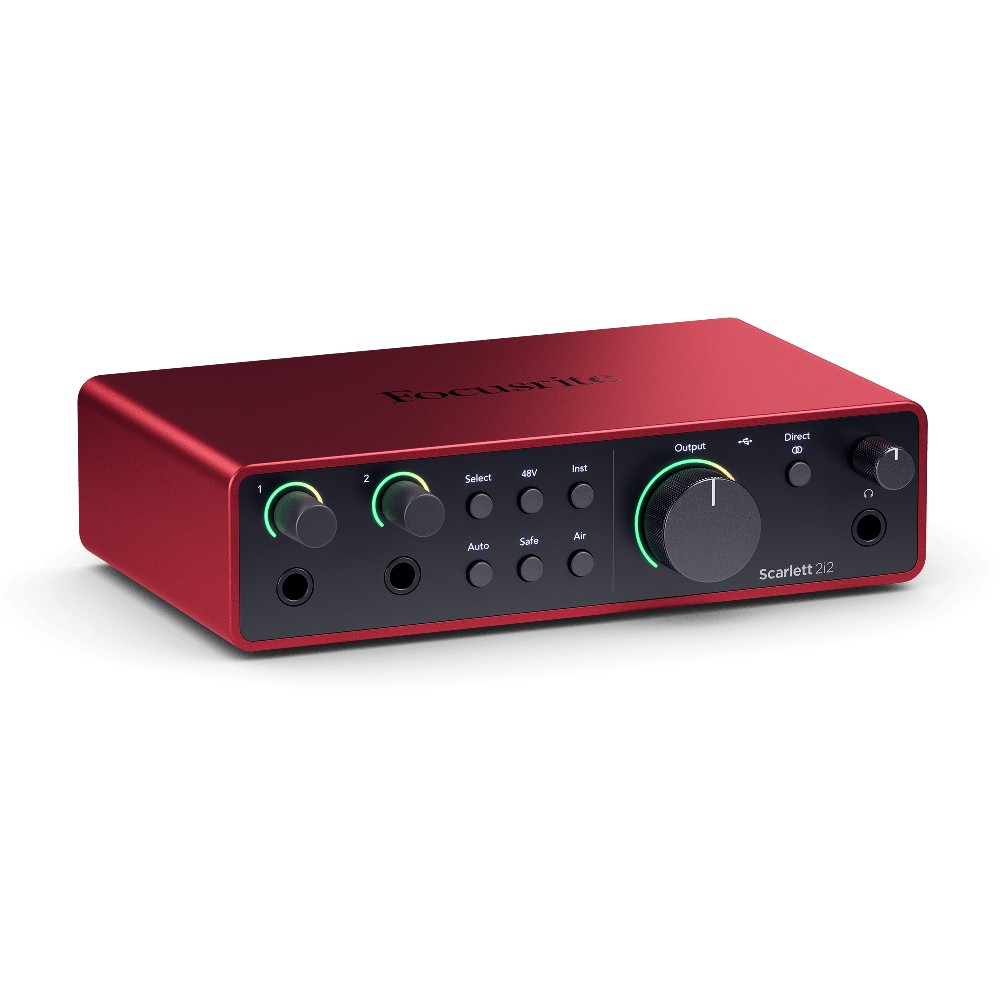
The Scarlett 2i2 remains the go-to for many home producers because it hits the sweet spot: affordable, great-sounding, and simple to use. The 4th Gen refreshed the preamps and improved gain staging, giving more headroom for low-output mics and ribbon mics without resorting to external boosters. It’s compact, bus-powered, and works on Mac and Windows with minimal fuss — ideal for singer-songwriters, beatmakers, and streaming musicians who track remotely. If you want a two-input, high-quality interface with proven software support, this is the pragmatic pick.
Who should buy: Solo musicians, beginners, mobile recordists.
Main downside: If you need DSP or tons of I/O, look higher up the ladder.
Best for podcasting and live streaming: RØDECaster Pro II / Focusrite Vocaster
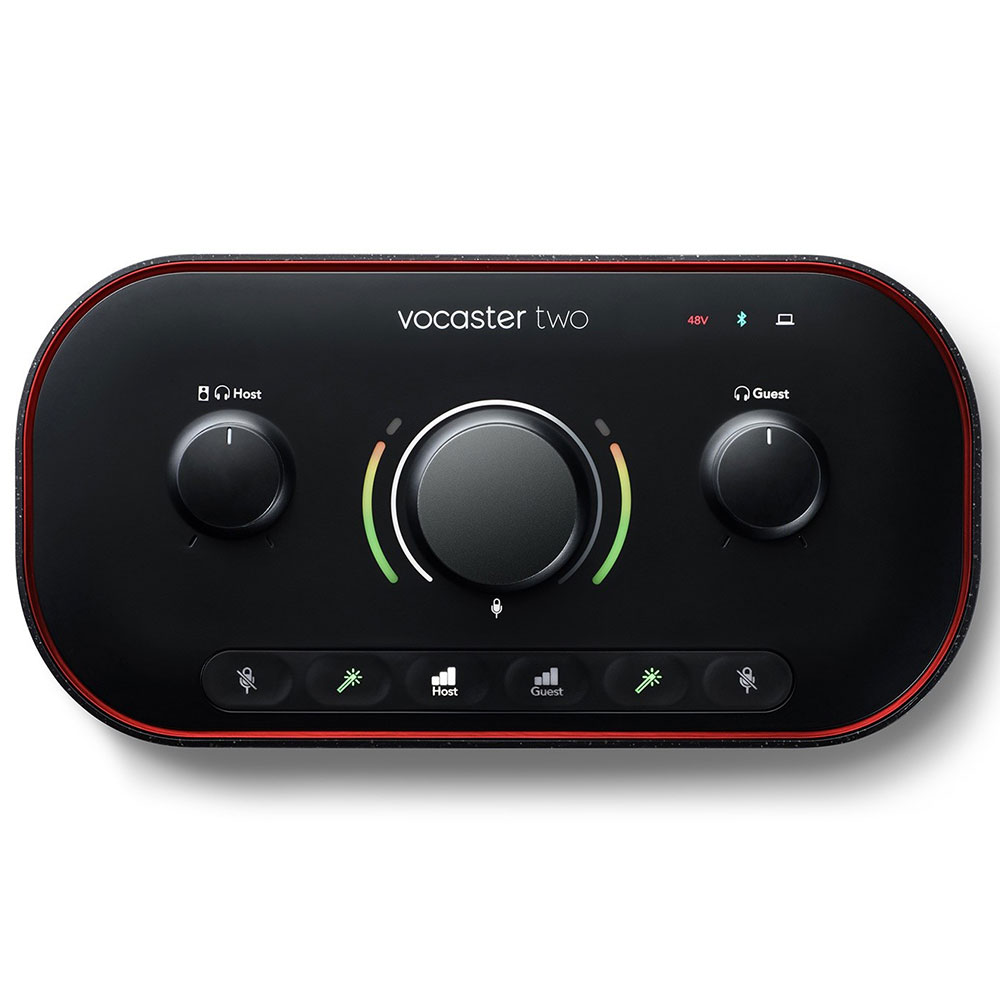
Podcasting workflows are varied: some creators want a simple USB-to-computer solution for one mic, others need multi-host handling, phone call integration, and easy live streaming setups. The RØDECaster Pro II is a dedicated podcast workstation — multiple mic inputs with great preamps, on-board recording, and powerful ergonomics for live shows. For streamers who prefer a compact two-channel interface with streaming-friendly features, Focusrite’s Vocaster series provides vocal-first processing and easy routing. Both approaches save time and reduce complexity compared with building a mixer + interface rig. The Podcast Consultant+1
Who should buy: Podcast hosts, livestreamers, interviewers.
Main downside: Hardware mixers/all-in-one units trade flexibility for simplicity — pro studios may prefer modular interfaces and a separate mixer.
Best pro/producer choice: Universal Audio Apollo Twin X
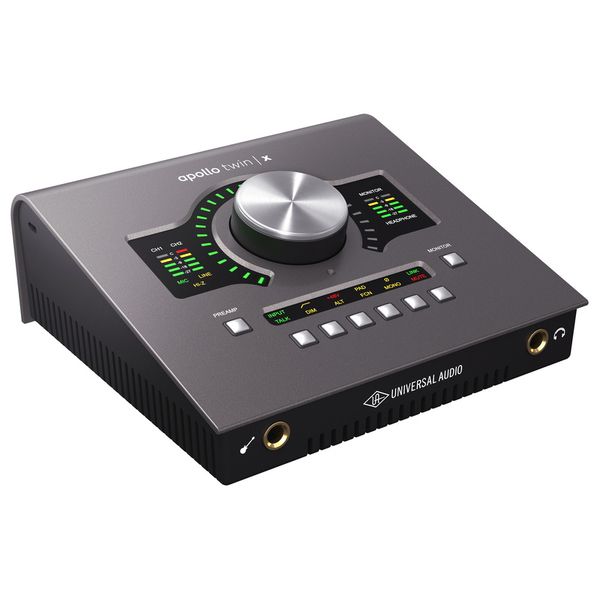
If you want industry-grade converters plus integrated UAD DSP for real-time plugin processing, the Apollo Twin X remains a top choice in 2025. It’s used by pros who track with near-zero latency while running UA’s emulations (compressors, preamps, tape machines) in real time. The build, driver stability, and sound quality justify the premium for people who rely on those UAD plugins as part of their sound. If your budget allows and you care about professional color and processing, Apollo is hard to beat.
Who should buy: Producers, mixing engineers, pro home studios.
Main downside: Price; UAD ecosystem is proprietary (but powerful) and adds to cost.
Best budget/value choices: MOTU M2 / Behringer, and Audient options
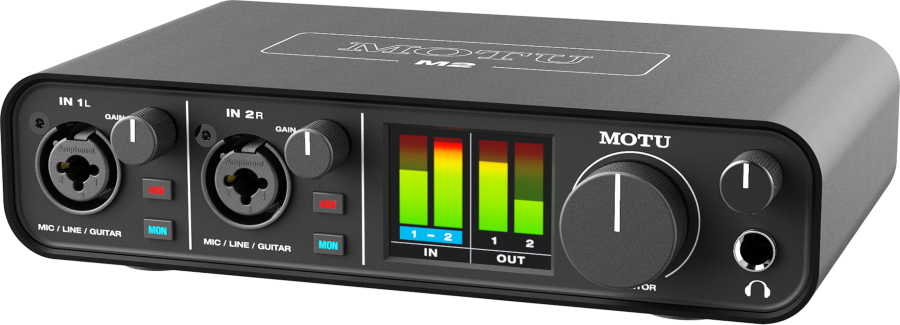
Budget options in 2025 are surprisingly good. The MOTU M2 and M4 stand out for their class-leading converters and on-device metering — features rarely found at their price point. For absolute tight budgets, Behringer’s U-Phoria line and Audient’s entry interfaces deliver clean sound with fewer bells and whistles. If you’re building your first studio, value models give clean audio and low latency without breaking the bank. SOUNDREF+1
Who should buy: Beginners, podcasters on a tight budget, mobile recordists.
Main downside: Fewer inputs and fewer advanced features.
Best for more I/O / hybrid setups: PreSonus Quantum HD and MOTU UltraLite
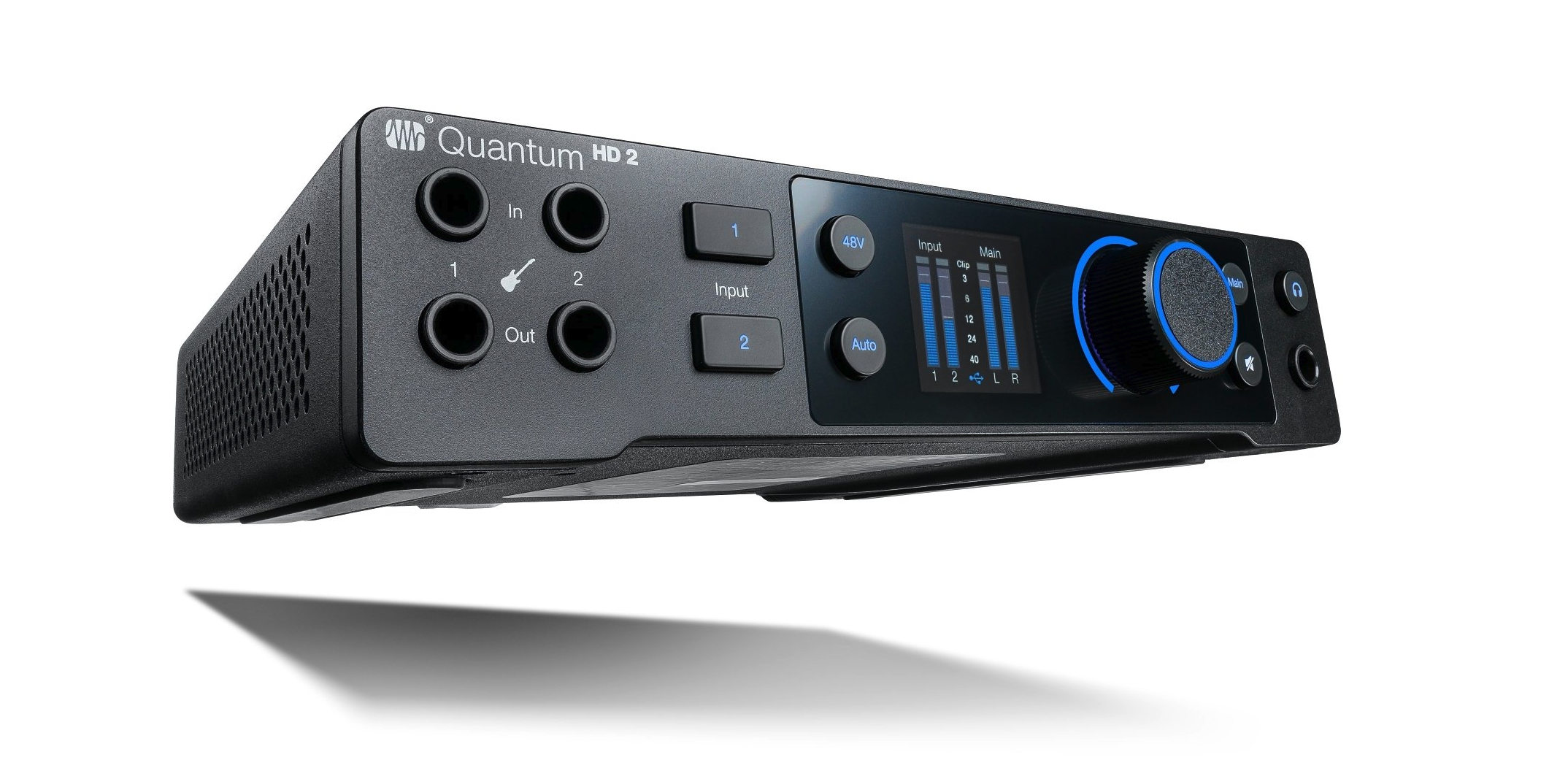
If you need expanded I/O, better clocking, and the option for multiple mic preamps, consider the PreSonus Quantum HD series or MOTU UltraLite mk5 family. The Quantum HD line brought Thunderbolt/USB-C performance and more flexible routing, making it a solid pick for small project studios that occasionally need to track full bands. MOTU’s UltraLite line has matured into a compact powerhouse for hybrid setups — great for those who want lots of I/O in a small box.
Who should buy: Small studios, multi-instrument sessions, hybrid video/audio creators.
Practical tips: matching mics, monitors, and workflow
-
Mic pairing: Dynamic mics (SM7B, Shure SM58) usually need lots of clean gain — look for interfaces with >60dB gain, or plan a Cloudlifter/inline preamp if your interface lacks gain. Condensers require phantom power; check the interface has 48V per input.
-
Headphone mixes & latency: If you need near-zero latency monitoring while recording, pick an interface with a dedicated hardware monitor mix or DSP monitoring (Apollo, MOTU, many Focusrite models). Descript
-
Loopback for streaming: Streaming software loves devices that can create loopback/virtual channels (to send game audio + mic to OBS). Many modern interfaces include this; for streaming, verify “multi-channel USB loopback” in specs.
What to avoid (common mistakes)
-
Buying purely on brand or price, cheap preamps can introduce noise that ruins recordings, even if converters are advertised as having high bit depth.
-
Ignoring driver reviews — a great spec sheet means nothing if drivers are jittery on your OS. Check recent driver updates for your platform.
-
Overbuying I/O you’ll never use — extra inputs sound nice, but add cost and complexity.
Final verdict — what to buy (by use case)
-
Bedroom musician/solo singer: Focusrite Scarlett 2i2 (4th Gen) — balance of sound, price, and simplicity.
-
Podcaster/solo streamer: RØDECaster Pro II or Vocaster Two — choose RØDECaster if you want hardware recording + multi-host features; Vocaster if you prefer Focusrite’s streamlined path to streaming.
-
Streamer who plays and talks (game + mic): An interface with loopback (Focusrite Vocaster, MOTU with loopback) or compact mixer-like RØDE.
-
Producer/pro home studio: Universal Audio Apollo Twin X (or RME Babyface Pro if you want rock-solid drivers and ultra-stable performance without DSP).
-
Budget beginner: MOTU M2 / Behringer UMC / Audient iD series.
Short buying checklist (copy/paste)
-
How many mic inputs do you actually need?
-
Does it supply enough gain for your mic(s)? (>60dB for quiet dynamics like SM7B)
-
Do you need a loopback for streaming? (Yes → look for “loopback” feature.)
-
Is it bus-powered or requires an external PSU? (Mobile vs stationary)
-
Does the manufacturer have recent driver updates for your OS? (Check reviews)
-
Do you want onboard DSP? (UAD, onboard compressors, etc.)
Closing notes
2025’s audio-interface landscape is healthier than ever: companies focused on solid driver support and added smart features (loopback, DSP, better metering). For most home studios and content creators, the Focusrite Scarlett 2i2 (4th Gen) is the sensible, expert-tested sweet spot — but the right choice ultimately depends on your mic choice, the number of inputs you need, and whether you prefer hardware simplicity (podcasting consoles) or modular flexibility (separate interface + mixer). For deeper reading, pro tests and roundups from MusicRadar, dedicated podcast guides, and studio-gear reviewers are excellent next stops
Nothing Headphone (1) Review: Stylish Design, Strong Features, But Quirky Trade-Offs
Written by Sounds SpaceOverview
Nothing has finally jumped into the over-ear / full-size noise-cancelling headphone market with the Headphone (1). It’s their first “big cans” offering, following earlier success with earbuds. They partnered with KEF, a well-regarded UK audio specialist, for the sound tuning. TechRadar+3KEF US+3SoundGuys+3
The Headphone (1) sells itself on a mix of strong specs, bold design, a lot of customisation, and some trade-offs. If you like features and statement style but are a bit more forgiving in perfection, these are a tempting package. But there are quirks.
Key Specs & Features
To start, here are the essentials:
| Spec | What you get |
|---|---|
| Drivers | 40 mm dynamic drivers, custom tuned with KEF KEF US+2SoundGuys+2 |
| Frequency range | 20 Hz – 40,000 Hz KEF US+1 |
| Connectivity | Bluetooth 5.3 (supports multipoint / dual-device), USB-C, 3.5 mm wired connection included SoundGuys+2PhoneArena+2 |
| Codecs | SBC, AAC, LDAC are supported SoundGuys+2PhoneArena+2 |
| Noise cancellation / transparency | Adaptive ANC with multiple strength levels; transparency mode works decently; physical controls for toggling modes KEF US+3TechRadar+3SoundGuys+3 |
| Battery life | Up to ~35 hours with ANC on; up to ~80 hours with ANC off (numbers vary with codec & usage) TechRadar+3SoundGuys+3KEF US+3 |
| Quick charge | 5 minutes charging gives something like ~5 hours playback (ANC off) SoundGuys+1 |
| Weight / Comfort | Around 329 g, with memory foam ear-cups; good clamping force; headband has some padding but some reviews note it's a bit thin in places. SoundGuys+2The Guardian+2 |
| Water / Dust Resistance | IP52 rating (light dust and water resistance) — good for sweat / light rain, though not for heavy exposure. SoundGuys+1 |
| Design & Controls | Transparent “caps” / see-through aesthetic; a roller (wheel) on the right cup for volume, a paddle / switch for track skip, physical on/off toggle; a button that can be customised. KEF US+3PhoneArena+3SoundGuys+3 |
What It Does Well
These are the highlights — what makes the Headphone (1) shine.
-
Design & Aesthetic Statement
If nothing else, these headphones attract attention. The semi-transparent portions reveal internal components (or at least look like they do), and the shape / finish is bold. If you enjoy gadgets that are also fashion / design pieces, these hit that mark. SoundGuys+2PhoneArena+2 -
Rich Feature Set
Very few in this class give you all of: USB-C wired audio, 3.5mm jack, high-res LDAC, dual-device Bluetooth, spatial audio with head tracking, good app support with EQ customisation. It’s a loaded package technically. SoundGuys+2PhoneArena+2 -
Battery Life
The real world battery life with ANC on is solid, often exceeding the claimed 35 hours in many tests. With ANC off, the potential for up to ~80 hours is impressive if you can live with wire-free usage and occasional charging. SoundGuys+2KEF US+2 -
Good ANC + Transparency
While not perfect, the ANC is very usable. It significantly cuts down low-end and midrange ambient noise (traffic, engines, chatter). Transparency mode works well enough for letting in ambient sound; though there are quirks (your own voice may sound boomy to you etc.). SoundGuys+2TechRadar+2 -
Physical Controls
Many people dislike touch-controls for headphones because they can be unreliable or accidentally triggered. The Headphone (1)’s use of real, tactile controls (wheel, switch, buttons) is widely praised. PhoneArena+2SoundGuys+2
The Quirks / What Might Be a Compromise
No product is perfect, and these headphones come with trade-offs. Depending on your priorities, some may be deal-breakers.
-
Sound Out-of-the-Box Needs Tweaking
The default tuning is described by many reviews as mid-forward (vocals present, clarity), but not massively exciting in the highs, some unevenness, a bit more bass than some prefer. If you’re an audiophile or want a very flat / reference sound, you’ll probably spend time in the EQ settings to get things exactly to your taste. SoundGuys+1 -
Weight & Comfort for Long Sessions
At 329g, these are not lightweight. Some people report that after long hours (say during travel or headset-on duty) the weight and the padding (particularly in the headband) become noticeable. If comfort and wearing them for many hours straight is essential, that’s something to test in person. The Guardian+1 -
ANC vs Sound Trade-off
When ANC is active, there are some reviewers who say the sound becomes slightly narrower, or loses a bit of clarity—some “punch” and “air” get a bit suppressed. For music where detail and dynamism in the top-end matters, this matters. If you often use ANC, be aware you’re trading something. The Guardian+2SoundGuys+2 -
Not Truly “Flagship Premium” in Some Areas
Compared to entrenched top competitors (Sony, Bose, Apple), these may not surpass them in certain refined metrics: ultra-fine detail, finishing, some materials, perhaps replacement parts / long term support. For example, the replaceability of ear pads is a question, and while they are removable, the availability (at least at launch) of replacements is uncertain. WIRED+1 -
Looks Are Bold, Which May Not Be to Everyone
As expected, the transparent design and large earcups are eye-catching. Some people love that. Others might find them too showy or simply prefer something more understated. Also, lighter colors (white / silver) draw more attention (and will show dirt etc.). The Guardian+1
Who They’re Best For
Putting together strengths and compromises, here are the types of users who will probably get the most out of the Nothing Headphone (1), and those who might want to consider alternatives:
| Good fit if you… | Maybe look elsewhere if you… |
|---|---|
| • Like design / aesthetics as much as sound. Want something that stands out. | • Want ultra-subtle / minimal / understated gear. |
| • Appreciate physical controls, and want tactile feedback rather than touch only. | • Hate heavy gear or have a small head / lightweight sensitivity. |
| • Want long battery life, multiple connection options (wired & wireless), spatial audio etc. | • Prioritize top-tier ANC performance or absolute audio fidelity out-of-the-box. |
| • Don’t mind tweaking EQ or adjusting to get your preferred sound signature. | • Want flat / reference sound with minimal adjustment needed. |
| • Use them for mixed activities: commuting, some gym / outdoors (light), travel, office etc. | • Need ruggedness / high-water protection, or extremely light headphones for extended daily usage without fatigue. |
Verdict
All things considered, the Nothing Headphone (1) is a very strong debut over-ear product, especially given the competition. It hits many marks:
-
Great battery life
-
Very usable ANC
-
Rich feature set and connectivity
-
Bold and memorable design
-
Physical controls you actually want to use
But it also comes with quirks: it’s heavy, the sound isn’t perfectly balanced with ANC on, and if you don’t care about looks or you want something very subtle, some competitors might appeal more.
If I were you and looking for premium wireless over-ears in this price/feature space, I'd definitely have these on the shortlist—but I would try them in person, especially for comfort, and be ready to dive into the EQ settings to get maximum satisfaction.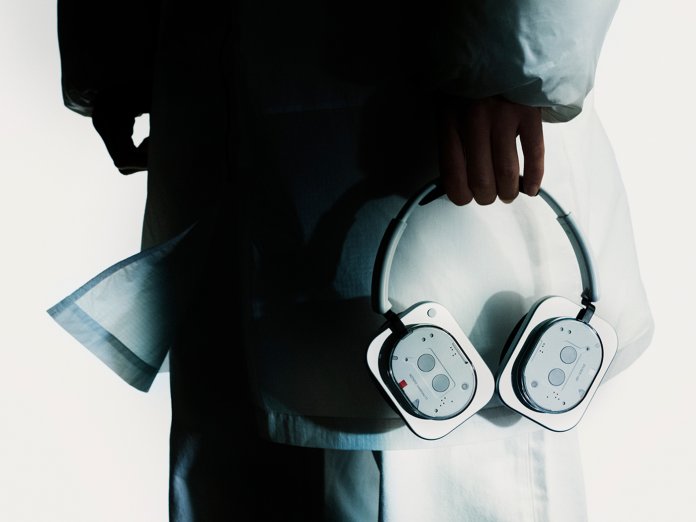
Key Competitors
-
Sony WH-1000XM5 / XM6
-
Bose QuietComfort Ultra Headphones
Spec-by-Spec & Feature Comparison
| Feature | Nothing Headphone (1) | Sony WH-1000XM5 / XM6 | Bose QuietComfort Ultra |
|---|---|---|---|
| Price point | ~$299 MSRP Tom's Guide+2Tom's Guide+2 | Higher (US$ ~399-450) Tom's Guide+2Tom's Guide+2 | Even higher (~US$429) Tom's Guide+2SoundGuys+2 |
| Battery life | Up to ~35 hrs with ANC on; up to ~80 hrs with ANC off (varies by codec) RecordingNOW.com+3SoundGuys+3Tom's Guide+3 | Sony XM6: ~30-40 hrs with ANC on/off in typical cases; XM5 similar in many real-world tests RecordingNOW.com+2Tom's Guide+2 | Bose QC Ultra: significantly less life (≈ 24 hrs with ANC) Tom's Guide+1 |
| Weight / Comfort | Heavier (~329g) which may mean more fatigue over long sessions; decent padding but harder head clamp reported by some Tom's Guide+2RecordingNOW.com+2 | Sony models tend to be lighter and more refined for long wear; better ergonomics generally noted HomeTheaterReview+2SoundGuys+2 | Bose QC Ultra is lighter than the Nothing, with more plush cushioning etc. SoundGuys+1 |
| Noise Cancellation (ANC) | Strong, usable in many environments; probably “above average” but not the absolute top in windy / harsh ambient noise; some loss of clarity with ANC engaged. SoundGuys+2Aaron x Loud and Wireless+2 | Sony is generally considered the benchmark: excellent ANC, especially for lower-frequency, engine noise, etc. Performs better in many “difficult” noise situations. HomeTheaterReview+2SoundGuys+2 | Bose has a long history with some of the best ANC. QC Ultra is among the top in blocking ambient noise, especially in lower and middle frequencies. SoundGuys+1 |
| Sound / Out-of-Box Tuning | Darker signature by default; heavy bass and lower mids, treble and vocals may feel recessed unless adjusted with EQ. Good “fun” listening once tweaked. SoundGuys+2Aaron x Loud and Wireless+2 | Sony tends to have a more balanced, polished sound out of the box; more “neutral” / more familiar tuning that needs less user tweaking. SoundGuys+2HomeTheaterReview+2 | Bose also leans toward more balanced, premium sound; tends to preserve clarity, mids, and treble a bit more without needing huge adjustments. SoundGuys+1 |
| Features / Extras | Very generous: USB-C wired audio mode, 3.5 mm jack, LDAC support, adjustable EQ (parametric), environmental / ambient / pass-through modes, IP52 rating, physical controls (roller, switch, etc.) SoundGuys+3Aaron x Loud and Wireless+3Tom's Guide+3 | Sony has some advanced software features (adaptive modes, app customisation, etc.), low-latency modes in newer models, well-tuned microphones, etc. But often lacks water resistance rating. SoundGuys+1 | Bose adds premium ANC, immersive audio (“immersive mode” etc.), good spatial audio, good mic performance, traditional Bose comfort. May lack some unique touches like transparent design or USB-C audio (depending on region/model). SoundGuys+2Tom's Guide+2 |
What Each Does Best & Trade-Offs
| If you care most about... | Best Pick | Why / What You Sacrifice |
|---|---|---|
| Top-tier noise cancellation (especially for travel, airplanes, noisy public transport, windy outdoors) | Sony WH-1000XM5/XM6 or Bose QuietComfort Ultra | You’ll pay more; battery life might be less (especially with ANC at higher strength); possibly fewer rugged / water-resistance features. |
| Long battery life + versatile connectivity + value | Nothing Headphone (1) | Sound out of box may need tweaking; heavier weight; may not match the ultra-refined finish or ANC of the Sony/Bose flagships. |
| Immediate sound quality, minimal fuss | Sony or Bose | You’ll pay more, and design features / “cool factor” are more restrained; less uniqueness in appearance. |
| Physical controls, design / uniqueness | Nothing Headphone (1) | You give up some refinement in noise cancellation at extreme conditions; bulk / heft / maybe less polish in fit. |
| Comfort over long sessions | Likely Sony or Bose | Nothing’s weight and clamp might become tiring after many hours; you’ll need to test in person. |
Final Thoughts: Which Should You Pick?
Here are some “user-profiles” to help you decide:
-
If you want a stylish, feature-rich headphone and don’t mind tweaking → Nothing Headphone (1) is a great value. Lots of bang for buck: decent ANC, excellent battery, rich features. If you like the look & enjoy tuning EQ / personalising sound, it’s very compelling.
-
If you travel a lot / want excellent isolation → Sony (or Bose) edges it. They’ve been doing this longer, and in harsh noise environments, they still tend to perform better with ANC and microphone clarity.
-
If comfort all day / long sessions matter → Again, Sony / Bose probably wins: lighter, more refined cushioning, better padding etc.
-
If price is a concern → Nothing gives much of the premium feel & many premium features for less money. It’s the strongest contender “just under top-tier” currently.
The Future of AI in Music: Will Artificial Intelligence Replace Artists?
Written by Sounds SpaceThe Future of AI in Music: Will Artificial Intelligence Replace Artists?
Introduction
Artificial Intelligence (AI) has rapidly moved from being a futuristic concept to an everyday reality. In industries like healthcare, finance, and transportation, AI has already proven to be a disruptive force. But one of the most fascinating—and controversial—frontiers of AI is its role in the music industry.
Over the past few years, we’ve seen AI models compose symphonies, generate beats, replicate iconic voices, and even perform live concerts in virtual spaces. Some celebrate this as the dawn of a new creative revolution, while others fear it marks the beginning of the end for human musicians.
This blog explores the current state of AI in music, its benefits and drawbacks, and the ultimate question: Will AI replace artists, or will it become a powerful tool that enhances human creativity?
A Brief History of AI in Music
AI in music isn’t as new as it seems. As far back as the 1950s, researchers experimented with algorithms to generate melodies. In the 1990s, programs like Experiments in Musical Intelligence (EMI) by David Cope could mimic the style of famous composers like Bach and Mozart.
Fast forward to today, and AI has gone mainstream:
-
OpenAI’s Jukebox can generate full songs in the style of famous artists.
-
Suno, Aiva, and Boomy allow anyone to create professional-sounding tracks in minutes.
-
Endlesss and Amper Music let producers use AI as a collaborative partner in real-time.
-
Deepfake voice AI can replicate singers so well that some recordings are nearly indistinguishable from originals.
This evolution shows a clear trajectory: AI is not just a tool for experimentation anymore—it’s a full-fledged participant in music creation.
How AI Is Changing Music Creation
1. Songwriting and Composition
AI can generate melodies, harmonies, and lyrics based on prompts. Tools like ChatGPT for lyrics and AI composition platforms for melodies make it possible for anyone to produce a song without prior training.
2. Music Production
AI-powered plugins analyze a mix and automatically adjust EQ, compression, and mastering. Services like LANDR offer instant AI mastering, allowing indie musicians to release polished tracks affordably.
3. Personalized Music
Streaming services like Spotify and YouTube already use AI for recommendations. Now, AI can compose personalized soundtracks for workouts, studying, or relaxation, adapting in real time to listener preferences.
4. Performance and Virtual Artists
Virtual pop stars like Hatsune Miku (powered by vocal synthesis) and AI-driven performers are gaining global fanbases. Even “AI DJs” are appearing on radio stations and in clubs, mixing tracks live.
The Benefits of AI in Music
-
Accessibility for All
AI lowers the barrier to entry, allowing anyone—even without musical training—to create songs. This democratization of music creation empowers hobbyists, independent artists, and even businesses looking for custom soundtracks. -
Collaboration, Not Competition
Many musicians use AI as a creative partner. For example, a producer might generate dozens of chord progressions and then select one to refine. This speeds up workflows while keeping human input at the center. -
Efficiency and Speed
What once took hours in a studio can now take minutes. AI mastering, beat-making, and lyric suggestions save time and costs. -
New Creative Possibilities
AI can generate sounds humans might never think of. Hybrid genres and experimental tracks are being born from AI’s unpredictable creativity. -
Market Expansion
AI-generated background music for videos, podcasts, and video games is booming, creating new revenue streams for platforms and composers alike.

The Controversies and Concerns
While AI brings innovation, it also raises serious ethical, economic, and creative concerns.
1. Authenticity
Can a song generated by AI truly be considered “art”? Music has always been deeply tied to human emotion and experience. Some argue that AI-generated songs lack the soul and authenticity that come from human struggles, triumphs, and lived stories.
2. Job Displacement
Just as automation disrupted manufacturing, AI may threaten careers in the music industry. Session musicians, composers for ads, and even mix engineers could see demand shrink as AI alternatives rise.
3. Copyright Issues
AI models are trained on vast datasets, often including copyrighted material. If an AI generates a track that sounds like a famous artist, who owns the rights? The creator? The AI company? Or no one?
4. Deepfake Voices
The rise of AI voice cloning has led to controversies. In 2023, AI-generated tracks featuring “fake” Drake and The Weeknd went viral. This sparked lawsuits and debates about consent, ownership, and exploitation of an artist’s likeness.
5. Homogenization of Music
Some critics argue that AI may lead to “cookie-cutter” music. If everyone uses the same AI tools, will all songs start to sound alike?
Case Studies: AI in Action
1. Grimes’ AI Experiment
Canadian singer Grimes embraced AI by allowing fans to use her AI-cloned voice in their songs, splitting royalties 50/50. This showed a potential business model where AI can expand, rather than replace, an artist’s brand.
2. Endel – Personalized AI Music
Endel creates adaptive soundscapes for focus, relaxation, and sleep. It even signed a deal with Warner Music, showing how AI-generated music can integrate into the mainstream industry.
3. AI Drake & The Weeknd Song
In 2023, a viral AI-generated track mimicked Drake and The Weeknd’s voices. While fans loved it, Universal Music Group pushed for its removal, citing copyright infringement. This case became a landmark moment in the AI music debate.
Will AI Replace Artists?
The big question: Is AI the future artist, or just another instrument?
Most experts agree that AI will not fully replace human musicians, but it will reshape the role of artists. Here’s why:
-
Human Emotion Is Irreplaceable
Audiences connect with stories, emotions, and lived experiences. AI cannot replicate the heartbreak in Adele’s ballads, the raw rage in punk rock, or the cultural context of hip-hop. -
Artists as Curators
Instead of writing every note, future musicians may act as curators—guiding, editing, and shaping AI-generated ideas into meaningful works. -
Hybrid Creativity
Just as electronic instruments didn’t eliminate guitars, AI will likely become another tool in the studio. The artists who adapt will thrive, while those who resist may struggle. -
New Roles in Music
Musicians may evolve into “AI conductors,” shaping unique collaborations between human inspiration and machine output.
The Future Landscape of Music
1. AI as a Creative Partner
We may see more artists openly collaborating with AI, crediting it as a co-producer. Albums might include tracks partially composed by machines but refined by humans.
2. Rise of Virtual Stars
The success of virtual influencers and vocaloid singers suggests that fully AI-generated celebrities may become mainstream. However, their longevity will depend on whether audiences form emotional attachments.
3. Music for Every Moment
AI could create truly personalized soundtracks—music that adapts to your mood, location, or even heart rate. Imagine a playlist that changes dynamically as you jog, meditate, or celebrate.
4. Legal and Ethical Frameworks
Governments and music organizations will need to establish clear rules around copyright, royalties, and AI-generated content to prevent exploitation.
5. Global Collaboration
AI may enable musicians from across the world to collaborate seamlessly, breaking language and cultural barriers through universal machine-generated sounds.
Conclusion
Artificial Intelligence is transforming the music industry in ways both thrilling and unsettling. While AI can compose, perform, and even replicate human voices, it cannot replace the emotional depth, storytelling, and cultural impact of real artists.
Instead of fearing replacement, musicians should view AI as an evolving instrument—much like the electric guitar or synthesizer once were. Those who embrace and adapt will likely find themselves on the cutting edge of a new musical revolution.
So, will AI replace artists? Unlikely. But it will challenge our definition of artistry, redefine the music business, and forever change how we create and consume music.
The future of music isn’t humans or AI—it’s humans with AI.
Live Music and Economic Recovery in the UK: How Concerts Are Powering a Cultural and Financial Revival
Written by Sounds SpaceLive Music and Economic Recovery in the UK: How Concerts Are Powering a Cultural and Financial Revival
Introduction
When the COVID-19 pandemic struck in 2020, the UK’s live music sector was one of the hardest hit. Venues shut their doors, festivals were cancelled, and countless jobs tied to touring, events, and production disappeared almost overnight. For many, the silence was not just cultural—it was economic devastation.
Fast forward to 2025, and the picture looks very different. According to recent figures, UK consumer spending on live music hit a record £6.68 billion in 2024, representing a 9.5% year-on-year rise. This surge is not only a cultural milestone but also a vital contributor to the country’s broader economic recovery. Major tours—particularly Taylor Swift’s monumental Eras Tour—have helped drive demand to unprecedented levels, while domestic festivals and smaller events are benefiting from renewed public enthusiasm.
But beneath the headlines of record-breaking revenue lies a more complex story. While big-name artists and large arenas thrive, grassroots venues and independent promoters continue to face challenges. This blog will explore how live music is shaping the UK’s economic revival, why certain segments of the industry are thriving while others struggle, and what the future holds for the live music landscape.
The Scale of Recovery
The UK music industry has always been a cornerstone of cultural life, but the last two years have seen it become an economic powerhouse. The £6.68 billion in live music spending in 2024 represents more than just ticket sales. That figure encompasses hospitality, tourism, transport, and countless ancillary services that thrive around live performances.
For example, a single stadium concert doesn’t just benefit the artist and venue. Hotels fill with visitors, restaurants see a surge in bookings, taxis and public transport services get a boost, and even retail benefits from footfall. The ripple effect of a major tour stop can inject millions into a local economy overnight.
The Eras Tour is the perfect case study. Taylor Swift’s UK shows in 2024 were so popular that they not only boosted national ticket sales but also created what economists dubbed the “Swift lift”—a measurable spike in consumer spending in host cities. According to local reports, hotel occupancy rates skyrocketed, and many businesses saw record sales during concert weekends.
Why Live Music Matters to Economic Recovery
The significance of live music in the UK goes far beyond cultural enrichment. It plays a tangible role in the country’s economic revival post-pandemic. Here’s why:
-
Job Creation
The live music ecosystem supports a vast array of jobs—from performers and promoters to sound engineers, lighting technicians, stagehands, security staff, ticketing agents, and more. The resurgence of concerts means thousands of people are back in work. -
Tourism Boost
Music tourism is a key growth driver. Fans often travel across regions—or even internationally—to attend shows. According to UK Music’s industry reports, music tourism generated billions annually even before the pandemic. The resurgence of international tours has reignited this sector. -
Cultural Export Power
British music has long been one of the nation’s most successful exports. By fostering a vibrant live scene at home, the UK continues to strengthen its cultural brand abroad, reinforcing its reputation as a global hub for music. -
Spillover to Other Sectors
As mentioned, live music events stimulate local economies. From transport networks to hospitality, the benefits extend far beyond the concert hall.
The Big Players Driving Growth
While the overall industry is booming, certain artists and tours have had an outsized impact on revenue growth.
-
Taylor Swift’s Eras Tour: By far the most significant driver of spending in 2024. Swift’s shows were not just concerts—they were economic events, with fans traveling long distances, often spending hundreds or even thousands of pounds on tickets, merchandise, and related activities.
-
UK Festivals: Glastonbury, Reading & Leeds, Wireless, and countless regional festivals have roared back with record attendance. Their popularity underlines the UK’s deep-rooted festival culture, which remains a draw for international visitors.
-
Legacy Acts: Artists like Elton John, Coldplay, and The Rolling Stones continue to command massive audiences, often selling out stadiums across the country. These acts sustain demand among older demographics, further broadening the live music market.
The Grassroots Challenge
Despite these positive headlines, not all areas of the live music ecosystem are benefiting equally. Grassroots venues—small clubs, pubs, and local stages—remain under severe pressure.
-
Rising Costs
Energy bills, rent, and staffing costs have soared, squeezing already tight margins. Unlike major arenas, smaller venues lack the economies of scale to absorb these expenses. -
Competition for Attention
With mega-tours dominating media coverage and consumer budgets, smaller shows often struggle to attract audiences. Younger fans may prioritize saving for a big stadium experience over attending multiple local gigs. -
Closure Risk
According to the Music Venue Trust, dozens of grassroots venues have shut down since the pandemic. This trend poses long-term risks for the industry, as these venues are crucial for developing new talent.

Cultural Impact of Recovery
The revival of live music isn’t just about economics—it’s also about social cohesion and cultural identity. After years of isolation and uncertainty, concerts and festivals have become powerful communal experiences. People aren’t just attending shows for the music; they’re seeking connection, celebration, and belonging.
This cultural revival has psychological benefits too. Mental health studies suggest that live music experiences contribute positively to well-being, reducing stress and fostering a sense of community. In this sense, the live music boom is also aiding the UK’s social recovery from the trauma of the pandemic.
Government and Policy Support
Policymakers are beginning to recognize the strategic importance of live music. Initiatives to support cultural industries, tax relief programs, and targeted grants have played a role in stabilizing parts of the sector. However, industry leaders argue that more needs to be done to protect grassroots venues and ensure a sustainable ecosystem from the bottom up.
There are calls for:
-
Targeted Funding to support independent venues.
-
Business Rate Relief to ease the financial pressure on small operators.
-
Regulation on Ticketing Practices to combat scalping and inflated resale prices, which frustrate fans and reduce accessibility.
The Role of Technology
Technology is reshaping the live music landscape in ways that enhance both consumer experience and revenue generation.
-
Ticketing Innovations
Dynamic pricing models and blockchain-backed tickets are being tested to improve transparency and reduce fraud. -
Hybrid Experiences
Livestreamed concerts remain popular, particularly for fans unable to travel. Some artists now offer hybrid models, combining in-person shows with digital access. -
Fan Engagement
Apps and wearable devices are enhancing the concert experience, from cashless payments to augmented reality stage effects. -
Data Analytics
Promoters and artists now have access to detailed audience data, enabling better tour planning, targeted marketing, and improved fan experiences.
The Future Outlook
Looking ahead, the live music sector in the UK appears poised for continued growth, but with important caveats:
-
Stadium Tours Will Dominate: Major international artists will continue to drive revenue through blockbuster tours.
-
Festival Culture Will Endure: UK festivals are deeply ingrained in cultural identity, ensuring their continued success.
-
Grassroots Uncertainty: Without intervention, smaller venues may continue to close, potentially weakening the talent pipeline.
-
Global Expansion: As UK acts tour globally and foreign artists flock to the UK, the country’s reputation as a live music capital will remain secure.
Conclusion
The revival of live music in the UK is both a cultural triumph and an economic lifeline. With consumer spending hitting £6.68 billion in 2024, concerts and festivals are proving vital to the nation’s broader recovery. From the stadium-filling spectacle of Taylor Swift’s Eras Tour to the bustling fields of Glastonbury, live music is delivering joy, connection, and prosperity on a scale rarely seen before.
Yet the story is not one of unqualified success. While the top end of the industry flourishes, grassroots venues remain vulnerable, threatening the future pipeline of UK talent. The challenge for policymakers, industry leaders, and fans alike is to ensure that the recovery is inclusive and sustainable.
In the end, live music is about more than money—it’s about people coming together to share in something greater than themselves. As the UK continues its journey of economic and cultural recovery, the roar of the crowd may just be its most powerful anthem.
U.S. Music Industry 2025: Streaming Revenue Hits $5.6 Billion as Paid Subscriptions Surge
Written by Sounds SpaceThe State of Music in 2025: How Streaming Continues to Drive U.S. Revenue Growth
Introduction
The U.S. music industry has entered a new era of dominance by streaming. What was once a disruptive technology is now the backbone of recorded music revenue. According to data from the first half of 2025, the U.S. market generated $5.6 billion, with streaming accounting for approximately 84% of total revenue. This isn’t just a continuation of trends from the past decade—it’s a transformation of how music is consumed, valued, and monetized.
Paid subscriptions remain the engine of this growth, with around 105 million active accounts, representing a 6.4% increase compared to the same period last year. While physical formats, downloads, and sync licensing still contribute, their role is increasingly marginal compared to the unstoppable rise of digital platforms.
In this blog, we’ll explore what these numbers mean for artists, labels, and fans, as well as the challenges and opportunities that lie ahead in the U.S. music market.
The Numbers That Matter
The $5.6 billion mid-year revenue figure highlights the sheer scale of today’s streaming economy. To put this into context, the entire U.S. recorded music industry generated about $4 billion in 2015. In just a decade, revenues have grown by more than 40%, largely fueled by subscription services like Spotify, Apple Music, Amazon Music, and YouTube Music.
The growth of 105 million paid accounts is equally significant. This represents not only a rise in consumers’ willingness to pay for access rather than ownership but also a shift in how they perceive the value of music. For decades, the industry struggled with piracy and declining physical sales. Now, millions are paying a steady monthly fee, ensuring recurring revenue for the sector.
Why Streaming Dominates
Streaming’s dominance stems from several key factors:
-
Convenience and Accessibility
Consumers can access millions of songs on demand, across devices, with curated playlists and AI-driven recommendations. This has fundamentally reshaped listening habits, moving people away from one-time purchases toward continuous engagement. -
Affordability
For less than the cost of a single CD per month, users gain access to entire libraries of music. Family plans and student discounts further lower the barrier to entry, encouraging household adoption. -
Personalization
Platforms use sophisticated algorithms to recommend songs tailored to each listener’s mood, time of day, and activity. This level of personalization has increased consumer satisfaction, making streaming stickier than traditional media formats. -
Mobile and Smart Device Integration
With smartphones, smart speakers, and in-car integrations, streaming has become part of everyday life. Music is now woven seamlessly into activities like commuting, exercising, or cooking.
The Role of Paid Subscriptions
While ad-supported free tiers exist, paid subscriptions remain the powerhouse of revenue growth. Ad-supported models often generate less income per user due to limited advertising spend and seasonal fluctuations. By contrast, subscription services guarantee predictable monthly cash flow.
The 6.4% increase in subscribers demonstrates that the U.S. market, though mature, is not yet saturated. This suggests continued upside potential, especially as younger listeners transition from free tiers to paid ones and as new bundling strategies (such as combining streaming with video or gaming services) attract fresh audiences.
The Decline of Physical and Downloads
Though streaming dominates, it’s worth noting the decline of traditional formats:
-
Physical Sales: Vinyl continues to enjoy a niche resurgence, but its overall share is tiny compared to digital. CDs, once the industry’s lifeblood, are now largely relegated to collectors and specialty releases.
-
Downloads: Digital downloads, once seen as the future, are now virtually obsolete. iTunes-style purchases have been almost entirely replaced by subscription access.
These declines underscore the complete transition from ownership to access. For the industry, it means adjusting distribution, marketing, and manufacturing strategies to fit a streaming-first world.
Implications for Artists
For artists, the dominance of streaming is both an opportunity and a challenge:
-
Exposure
Streaming platforms allow independent artists to reach global audiences without traditional label backing. A viral TikTok trend or playlist placement can launch careers overnight. -
Revenue Models
While overall industry revenue is growing, per-stream payouts remain contentious. Artists often argue that streaming pays too little compared to physical or digital sales. To earn the equivalent of one album sale, a song might need thousands of streams. -
Long-Tail Opportunities
Streaming rewards consistent output. Rather than relying solely on blockbuster albums, artists can release singles, remixes, and collaborations more frequently, generating steady engagement. -
Data Access
Artists now gain insights into where their music is being played, who their listeners are, and how audiences engage. This data empowers them to make informed decisions about touring, marketing, and merchandise.
The Label Perspective
For record labels, streaming represents a more predictable revenue stream compared to the boom-and-bust cycles of physical sales. Subscription models create recurring income, and global reach means U.S. music is being monetized in markets where physical distribution was once impossible.
However, labels must balance their relationships with platforms. The major streaming services wield immense power, often dictating terms and influencing which artists get prime placement on playlists. This dynamic raises questions about gatekeeping in a supposedly democratized digital world.
Consumer Behavior in 2025
Today’s listeners expect music to be instant, personalized, and seamless. The days of buying a single album and listening for months are gone. Instead, fans move fluidly between artists, genres, and moods, often guided by algorithmic suggestions.
Interestingly, playlist culture has overtaken traditional album listening. Many fans discover songs via curated or algorithm-generated playlists rather than through an artist’s complete work. While this boosts discovery, it can also dilute the role of albums as artistic statements.
Challenges Facing the Streaming Model
Despite its dominance, streaming is not without challenges:
-
Royalty Disputes
Artists and songwriters continue to push for higher payouts, while platforms argue about sustainability and profitability. The debate over “fair pay per stream” is far from settled. -
Market Saturation
With over 100 million subscribers, the U.S. market may soon hit a ceiling. Growth could slow, forcing companies to innovate with bundling, exclusive content, or new features. -
Competition from AI-Generated Music
The rise of AI-created tracks raises concerns about quality control and revenue dilution. Platforms are already grappling with how to regulate or label AI content. -
Piracy’s Evolution
While streaming reduced piracy, it hasn’t eliminated it. Some consumers still use unauthorized platforms or rip songs for offline use.
Opportunities Ahead
The growth in U.S. streaming revenue opens doors for innovation:
-
Interactive Experiences: As platforms explore virtual reality (VR) and spatial audio, fans may soon immerse themselves in more dynamic listening experiences.
-
Fan Monetization: Beyond standard subscriptions, artists may experiment with exclusive content, early releases, or fan club integrations.
-
Global Growth Spillover: The U.S. market often sets trends. As streaming expands worldwide, American artists and labels benefit from increased global exposure and revenue.
Conclusion
The first half of 2025 confirms what industry watchers have long predicted: streaming isn’t just the future of music—it is the music industry. With $5.6 billion in revenue and 105 million paid subscribers, the U.S. market is thriving. Yet, with opportunity comes challenge. Artists, labels, and platforms must navigate issues of fair compensation, market saturation, and technological disruption.
One thing is clear: streaming has reshaped the music ecosystem forever. For consumers, it means limitless access. For artists, it means global reach and new creative possibilities. And for the industry, it means steady growth—so long as it can adapt to the changing tides of technology and culture.
More...
The Will Smith “AI Crowd” Controversy: What Really Happened—and Why It Matters for Live Music
Written by Sounds SpaceThe Will Smith “AI Crowd” Controversy: What Really Happened—and Why It Matters for Live Music
In late August 2025, a short, feel-good concert montage posted by Will Smith—meant to thank fans on his European “Based on a True Story” tour—ignited a surprisingly intense debate: were the cheering audiences in the clip real people or the handiwork of generative AI?
Within hours, sharp-eyed viewers flagged oddities: hands with too many fingers, faces that looked slightly melty, signs that seemed to morph mid-shot. Accusations flew that Smith (or his team) had faked or boosted crowd size with AI. The discourse quickly broke out of fan circles and entertainment gossip and became a broader argument about authenticity, disclosure, and the creeping normalization of synthetic media in live music. (Cosmopolitan, News.com.au, Page Six)
Below, we unpack what the video shows, what experts and reporters have said so far, the plausible technical explanations, and what this all means for artists, marketers, platforms—and audiences—heading into a hyper-synthetic future.
The spark: a tour thank-you video with “AI tells”
The contested clip (shared across Smith’s social channels and YouTube) stitches together crowd cutaways, fan signs, and stage moments from the UK leg of his tour. Fans quickly noticed “AI tells”: blurred and rubbery faces in the mid-ground, peculiar hands and arms, and a sign whose text appears to change from one frame to the next as if regenerated between cuts. These are the exact sort of artifacts pop-culture audiences now associate with diffusion-based image/video generators when they’re pushed on crowds, typography, or fine anatomy. (Cosmopolitan)
Mainstream outlets amplified the detective work. The Times reported that OSINT practitioners and deepfake specialists saw hallmarks of generative AI in parts of the montage (notably in faces and hands), even as Google’s SynthID watermarking didn’t register. The absence of a watermark, of course, doesn’t prove authenticity—many tools don’t watermark, and compression or editing can wash signatures out—but the expert reads added fuel to public suspicion. (The Times)
By August 28, U.S. and international coverage framed the issue as “Smith accused of using AI to create fake or enhanced crowds,” citing the same anomalies and the emotional whiplash of a gratitude reel becoming a credibility crisis. As of this writing, Smith hasn’t publicly explained the workflow behind the video. (Fox News, Citizen Digital)
Two competing narratives (and why both can be partly true)
Narrative 1: It’s a fake crowd.
Critics argue the montage includes fully synthetic audience inserts or image-to-video shots created from stills—essentially conjuring extra fans or “prettier” reactions. They point to impossible anatomy and shifting signage as smoking guns. The implication: if an artist needs to fake enthusiasm, the tour must be struggling—and that’s a reputational landmine for any performer. (News.com.au, Yahoo)
Narrative 2: It’s real footage, mangled by AI upscaling and platform processing.
A more nuanced take—backed by media-tech observers—holds that the crowds were real, but the edit pipeline used aggressive AI tools (upscalers, frame interpolation, “video enhancement”) to clean noisy phone clips. Those tools can hallucinate detail, especially in dense scenes like crowds, producing the uncanny artifacts viewers spotted. To complicate things further, YouTube itself applies optional AI “enhancements” for some uploads, which can compound artifacts introduced upstream. In this reading, the sin isn’t inventing fans—it’s using undisclosed AI polish that blurs the line between documentary and stylized promo. (Waxy.org)
It’s fully possible both narratives have truth: a real crowd captured on consumer devices; an editor leaning on AI finishing to stabilize, upscale, or interpolate; platform-side processing finishing the job—and collectively pushing certain frames over the line into “that looks fake.”
What the evidence actually supports (so far)
-
There are documented artifacts consistent with generative methods—distorted faces and hands, signage that looks AI-rendered. That doesn’t, by itself, prove the entire crowd is synthetic; it proves the pipeline created synthetic pixels. Whether those pixels were intended to replace reality or merely “enhance” it is the crux. (Cosmopolitan, The Times)
-
Multiple reputable outlets have reported the controversy and consulted experts who say the footage bears generative characteristics. None have produced definitive proof that whole shots were pure AI renders, nor has Smith’s team offered a transparent postmortem of the workflow. In fast-moving news cycles, the lack of an on-the-record technical breakdown leaves interpretation to the crowd (pun intended). (The Times, Fox News)
-
A credible third-way analysis exists: the crowds were real, but a chain of AI upscaling/interpolation and platform processing hallucinated detail that reads as fake. This aligns with the type of artifacts observed and the state of current “video enhancement” tools. (Waxy.org)
Why this blew up: context, expectations, and trust
Why did a 60-second tour reel become a cultural Rorschach test?
-
Post-deepfake fatigue. Audiences have spent two years in a drip feed of AI-touched celebrity content—some playful, some malicious. People are primed to notice artifacts, call out fakery, and defend “the real.” (The Times)
-
Live music is supposed to be proof of life. Fans accept retouching in album art and even in music videos. But a concert montage feels documentary; viewers expect vérité, not visual synthesis. That makes even “harmless” enhancement feel like a breach.
-
The PR optics for Smith are fragile. After years of public scrutiny, detractors are quick to see corners cut or optics managed. The AI angle slotted neatly into a ready-made narrative of inauthenticity. (Yahoo)
-
Platforms quietly reshape uploads. If YouTube (or other platforms) applies AI-powered “improvements,” we’re in a world where even honest footage can pick up synthetic fingerprints—without a user ever selecting an “AI” button. That erodes the old gut test for what’s real. (Waxy.org)
The technical gray zone: a quick primer
To understand how “real crowd” footage can look fake, it helps to know the tools editors and platforms use:
-
AI upscalers infer extra pixels to turn soft 720p phone clips into crisp 1080p/4K. On complex textures—like thousands of tiny faces—they invent detail. When hallucination goes sideways, you get uncanny eyes, duplicate fingers, or plasticky skin.
-
Frame interpolation fabricates in-between frames for smoother motion (e.g., 24→60 fps). If the source is shaky or low-light, objects can smear or morph. Signs with small text are frequent casualties, appearing to “change” as the model guesses.
-
Deblur/denoise models can over-smooth and then re-invent micro-detail, producing a wax-museum look in mid-distance faces.
-
Platform “enhancements.” YouTube and other sites experiment with optional and sometimes default image improvements. Even if benign in intent, they can stack with editorial tools and tip footage into uncanny territory. (Waxy.org)
None of these techniques guarantees deception—but undisclosed use in a documentary-coded context (a tour diary) makes audiences feel tricked.
What artists and teams should do differently (a playbook)
-
Disclose, briefly but clearly. A simple lower-third or caption—“Footage enhanced with AI upscaling/stabilization”—respects viewers’ media literacy. You don’t need a dissertation; you do need a signal. This is especially crucial when crowds or signs are on screen.
-
Set “do-no-hallucinate” guardrails. Many tools allow strength controls and masking. Keep AI enhancement off faces and hands in crowds; use it on stage lighting, wide establishing shots, or purely aesthetic interstitials.
-
Prefer native capture quality over “fix it in post.” If you plan to make tour diaries, budget for a dedicated shooter and fast lenses. Clean input minimizes the urge for heavy AI finishing.
-
Keep receipts. In a controversy, being able to show untouched selects and your edit pipeline can put out fires. If you used only upscaling or denoise, say so—and show the toggles.
-
Coordinate with platforms. If YouTube’s enhancements are altering your footage, opt out for specific uploads where authenticity is key. Communicate that choice to fans.
What fans can realistically expect
Audiences are right to demand honesty from artists. But it’s worth distinguishing between fabrication (inventing people, reactions, or moments that never occurred) and enhancement (making imperfect real footage more watchable). The former is a breach of trust when presented as documentary; the latter is increasingly common across media. The ethical line isn’t always bright, but two questions help:
-
Would a reasonable viewer draw a wrong factual conclusion from the enhancement? If yes, that’s deception.
-
Would disclosure have changed the viewer’s interpretation? If yes, disclose.
In the Smith case, the lack of clarity widened the vacuum for suspicion. Until and unless the team publishes a workflow explanation, viewers will fill the gap with the worst-case read. That’s human nature—and, frankly, earned skepticism in 2025’s media climate. (Fox News, The Times)
The bigger picture: AI and the aesthetics of liveness
Live music is going through its own “Photoshop moment.” For decades, still images were quietly retouched; then culture caught up, demanded labels, and adjusted expectations. Video is now here: every smartphone has computational photography; every NLE has AI filters; every platform is dabbling in enhancement. That doesn’t make concert footage meaningless—but it does mean the industry needs norms.
A pragmatic framework could look like this:
-
Three tiers of disclosure
-
Authentic: minimal editing; no AI synthesis beyond color/exposure.
-
Enhanced: AI used for upscaling/stabilization/noise, not for people or text; disclosed in caption.
-
Synthetic: AI used to create or replace people, reactions, or signage; clearly labeled as creative interpretation.
-
-
Contextual labeling
If a video markets a tour—where ticket buyers’ expectations hinge on real-world demand and vibe—lean conservative. Save aggressive synthesis for music videos, where audiences expect artifice. -
Platform-level badges
Watermarks like SynthID are a start, but adoption is patchy. Platforms should expose enhancement toggles and surface “AI-touched” metadata, even when tools are applied post-upload. (In the Smith case, a visible badge plus creator-provided notes might have averted the pile-on.) (The Times, Waxy.org)
So…did Will Smith “fake” his crowds?
Based on public reporting and credible technical commentary available by August 28, 2025, the most defensible read is:
-
The concerts and crowds were real.
-
Parts of the video likely used AI-powered enhancement (and possibly platform-side processing) that introduced synthetic artifacts in faces, hands, and signs.
-
There is not definitive evidence that entire crowd shots were fully AI-generated from scratch, but some frames cross the visual threshold where many viewers perceive them as fake, which, in practice, becomes a trust problem regardless of intent. (Cosmopolitan, The Times, Waxy.org)
Until Smith or his editors offer a transparent walkthrough, the clip remains a Rorschach test: skeptics see an artist juicing optics; others see a team over-baking “enhancements” on real moments. Either way, the takeaway for every artist is the same: if you’re going to touch crowds with AI—even just to “clean up” phone footage—tell people. Viewers are media-savvy, and trust is easier to keep than to rebuild.
A closing note on empathy and responsibility
It’s easy to dunk on a celebrity for an over-processed tour reel. It’s harder (and more useful) to build healthier norms around AI in live culture. Artists want beautiful documentation; fans want honest memories. Those goals aren’t in conflict—unless we pretend the tools don’t matter.
The path forward is boring but powerful: better capture, lighter hands in post, and frank captions when AI touches the frame. If this mini-scandal nudges the industry toward that equilibrium, then one awkward montage will have done the live-music ecosystem an accidental favor. And the next time a star wants to thank their fans, the loudest thing in the video will be the real crowd itself.
Sources and further reading
-
The Times: reporting on expert analysis and SynthID checks; notes generative characteristics in faces/hands. (The Times)
-
Cosmopolitan: compiles fan-spotted anomalies (distorted faces, morphing signs) from the Instagram reel. (Cosmopolitan)
-
News.com.au: overview of the backlash and accusations surrounding the tour montage. (News.com.au)
-
Page Six: aggregation of the controversy and public reaction around “AI crowds.” (Page Six)
-
Waxy.org analysis: argues crowds were real but AI enhancement (including potential YouTube processing) blurred lines. (Waxy.org)
-
Fox News and other outlets: coverage as of August 28, 2025, emphasizing accusations and lack of official clarification. (Fox News)
Unleash Your Creativity: 10 Free Online Tools for Musicians
In his latest YouTube video, “10 free online tools for musicians!” Andrew Huang delivers a vibrant and invaluable roundup of digital tools—perfect for anyone itching to create music affordably. Released just last week and already generating buzz, the video fits seamlessly into Andrew’s signature enthusiastic and resource-rich style.
Here’s a breakdown of each exciting tool he highlights, along with insights and suggestions for making the most of them:
1. Musicca (Metronome)
A no-frills, browser-based metronome that's rock solid for practice, songwriting, or preparation for recording. You can tap tempo and select subdivisions—great for building precision and tempo awareness. Andrew underscores how vital timing is, and Musicca delivers.
2. Freesound (Sound Library)
A massive community-driven database of user-uploaded sound samples ripe for looping, remixing, or sampling. Whether you need birds chirping, synth waves, or retro drum fills, Freesound’s got coverage—plus, it's totally free and creatively licensed.
3. The Online Metronome (Tuner)
Yes, another metronome—but this one doubles as a tuner! Andrew points out the speed of access and simplicity: quick tuning without app installations. A practical tool for quick instrument setups and warm-ups.
4. Creative Writing / Production Prompts
Andrew recommends tools that trigger creative thinking—generating lyrical or compositional prompts that can spark fresh ideas when inspiration runs dry. A simple but powerful way to break through writer’s block.
5. Reverse Chord Identifier
Hum or input a chord, and this tool helps decode what it is. Amazing for early producers and songwriters who don’t yet know all the chord names but want to analyze or replicate sounds.
6. Virtual Piano
No piano keyboard? No problem. Andrew directs you to a virtual keyboard playable via mouse or computer keys—great for sketching ideas on the go or composing without gear.
7. Note-Frequency Chart
Ever wonder how certain musical notes correspond to precise frequencies? Handy for sound design, tuning synth layers, or blending acoustic and digital soundworlds. Andrew praises its clean visuals and quick reference.
8. Interactive Ableton-Style Tutorials
These browser-based lessons emulate the clip-launching magic of Ableton Live—perfect for beginners who want to understand electronic music structure and arrangement interactively.
9. Inspiration Generator for Creative Blocks
A playful tool that randomly pushes you into unexpected musical directions—like picking a style, instrument, or chord progression out of thin air. Andrew emphasizes how randomness breeds experimentation.
10. Bonus: Community & Links
Beyond the tools, Andrew peppers the video with links to his own ecosystem: socials, Patreon, gear, and plugins—an indirect but meaningful creative community resource (DEV Community).
Why These Tools Matter
-
Zero-Cost, High-Value Creation
Every tool is available in your browser, completely free—perfect for budget-conscious creators, students, or curious hobbyists. -
Instant Access & Seamless Workflow
No downloads or installations—just open your browser and get going. Quick tools like metronomes, tuners, and chord identifiers expedite workflows. -
Lessons + Remix Culture
With Freesound and virtual instruments, you're catapulted into remix-heavy culture—mixing, tweaking, and learning in real time. -
Browser-Based Learning
Interactive tutorials and virtual tools are excellent for building intuitive music production skills sans expensive DAWs. -
Creativity Catalysts
From writing prompts to inspiration generators, Andrew spotlights how unconventional tools can reframe your mindset and spark new musical ideas.
808 Day: Unlock the Legendary Roland TR-808 Plugin for Just $49 – Limited Time Only!
Written by Sounds Space
808 Day: Unlock the Legendary Roland TR-808 Plugin for Just $49 – Limited Time Only!
“Feel the BOOM. Feel the revolution.”
Every August 8th (8/08), music makers worldwide pay homage to the Roland TR-808—the drum machine that turned beats into culture. Known as the backbone of hip-hop, techno, trap, pop, and beyond, the 808's seismic, synthetic snap remains unmatched.
Why This $49 Deal Is a Beat-Making Game-Changer
This year, to mark the TR-808’s 45th anniversary, Roland Cloud is dropping its authentic TR-808 Software Rhythm Composer plugin—powered by Analog Circuit Behavior (ACB) modeling—for just $49 (regularly $149)
Here’s what makes it a must-own:
-
Pitch-perfect fidelity—it captures every dial, circuit nuance, and boom of the original hardware.
-
Modern enhancements include multi-lane step sequencing, per-instrument shuffle, flams, sub-steps, drag-and-drop MIDI or audio from plugin to DAW, plus support for Apple Silicon and VST3.
-
Seamless workflow—integrates with your DAW and even hardware versions like TR-8S or TR-08.
Bonus Features: More Than Just a Discount
Roland isn’t stopping at the plugin:
-
Dive into “The Rhythm Creators”, an animated video series starring music icons like Egyptian Lover, telling the untold stories behind the 808 sound.
-
Roland Cloud subscribers get access to a fresh 808-themed sound pack crafted by hip-hop legend Arabian Prince.
-
Plus, Pavement meets fashion: the Tiago Lemos NM808 x Roland sneakers are back—designed in 808-inspired colors and dropping at $114.99.
When to Act — Beat the Clock!
⏰ The $49 plugin deal runs through September 9, while Plugin Boutique also matches with the same price via their store until August 24. Don’t miss it—before long, it'll be gone.
Plug Into the Pulse of 808 Day
From its low-end rumble to those iconic cowbell clicks, the TR-808 is more than gear—it’s a cultural spark. This 808 Day, ignite your creativity with a plugin that’s equal parts vintage magic and modern production power.
Ready to feel the groove? The clock's ticking—get your TR-808 plugin now and join the rhythm revolution.
Let me know if you'd like graphics or audio examples to pair with this post!
Eddie Palmieri, Latin Music Legend, Dies at 88
Written by Sounds Space
Eddie Palmieri, Latin Music Legend, Dies at 88
The world of Latin music and jazz mourns the loss of Eddie Palmieri, a trailblazing pianist, composer, bandleader, and cultural icon who passed away on August 6, 2025, at the age of 88 in his home in Hackensack, New Jersey, after a prolonged illness.(Pitchfork, GBH, CBS News, LOS40, Wikipedia)
A Musical Innovator
Born in Spanish Harlem in December 1936 to Puerto Rican parents, Eddie's musical journey began early. By age 11, he was performing at Carnegie Hall, and at just 14, he formed his first band—signaling the start of a storied career.(Wikipedia, People.com)
In 1961, Palmieri formed La Perfecta, a groundbreaking ensemble that revolutionized salsa by featuring trombones in place of trumpets—crafting a darker, richer, and more textured sound.(The Guardian, Pitchfork, LOS40, Colombia One)
Fusing Genres, Defying Boundaries
Eddie’s music was a fearless fusion of Afro-Caribbean rhythms, jazz, funk, soul, and even psychedelic rock. His 1969 album Justicia tackled social justice themes, while later works continued to defy genre conventions.(Pitchfork, GBH, Wikipedia, The Guardian, LOS40)
Albums like El Sonido Nuevo, Vámonos Pa’l Monte, and the seminal The Sun of Latin Music (1974) cemented his reputation as an innovator. Notably, The Sun of Latin Music became the first Latin album to win a Grammy.(Wikipedia, The Sun, Cadena SER, The Economic Times, Colombia One)
Accolades & Enduring Influence
Eddie Palmieri’s creative genius earned him eight to ten Grammy Awards, including the very first for Latin music, as well as recognition as an NEA Jazz Master and a recipient of the Latin Recording Academy’s Lifetime Achievement Award.(The Sun, Cadena SER, GBH, People.com, Pitchfork, The Economic Times)
Beyond lauded recordings, Palmieri played a pivotal role in establishing the Grammy category for Best Latin Jazz Album, helping secure recognition for Latin musicians.(The Guardian, Colombia One)
A Life Lived with Joy & Purpose
Playing with unmatched energy and warmth, Palmieri radiated joy at the piano. He famously said, “I’m a frustrated percussionist, so I take it out on the piano.”(The Guardian, GBH)
Even in his final years, he remained active—recording, performing, mentoring, and inspiring new generations of artists. His compositions, such as "Azúcar Pa’ Ti," were honored in the Library of Congress’ National Recording Registry.(GBH, LOS40)
Legacy Beyond Music
Eddie Palmieri was more than a musician—he was a mentor, an innovator, and a cultural pillar. His art was an embodiment of Afro-Latin heritage and a rallying voice for social justice, identity, and musical freedom. Artists like La India, Víctor Manuelle, and Bobby Cruz have publicly mourned his passing, underscoring his deep impact.(LOS40, Cadena SER)
In Memoriam: The Beat Goes On
Eddie leaves behind a monumental legacy—one that resonates through every improvisation, every beat, every rhythm that pulses with the spirit of Latin jazz and salsa. As we listen to his powerful recordings and rediscover his fearless creativity, we honor a true titan of music whose influence will continue to ignite souls for generations.



